




























and other clean energy technologies often rely on rare earth elements and are challenging to mine and process due to their scarcity and potential environmental impacts.
“Brazil will be the last among its peers to shift to electrics and that’s because of ethanol.”
Eder Vieito, Senior Commodity Analyst at Green Pool Commodity SpecialistsEverywhere you turn now, there is talk of climate change, and the fact that we as humans are the cause of the earth’s demise. In many ways, these statements are true, but what is not being taken into consideration is the fact that products are being peddled by large corporations that are causing the earth more harm than good; case in point electric vehicles.
We hear all of the great things about EV’s, but the dangers are usually breezed over, and forgotten. Today I am going to focus on some of the dangers of EV’s, and one country who remains resistant to the EV revolution.
While EVs are cleaner during their operation, there are concerns about the environmental impact of producing lithium-ion batteries, which require mining and processing of rare minerals. This point cannot be denied; electric vehicles
The production of electric vehicle batteries is resource-intensive and has environmental consequences. The mining and processing of raw materials like lithium, cobalt, and nickel can lead to habitat destruction, water pollution, and other environmental issues. Additionally, some of these materials are sourced from countries with lax environmental regulations. Proper recycling and disposal of these batteries are also significant concerns.

As governments in many of the world’s other top economies lay out detailed plans to eventually end the sale of combustion-engine cars and focus on producing more electric vehicles (completely going against this fight to stop climate change) Brazil is saying NO! Instead, Brazil’s most popular car models are called flexible-fuel vehicles capable of running completely on biofuel produced from sugar cane, making them by most accounts cleaner than pure gasoline engines. Brazil’s plan is to reduce its reliance on cars that run entirely on gasoline, but it won’t touch the beloved flex-fuel models.
For two decades, Brazil’s unique solution to curb tailpipe emissions — specialty cars powered by any mix of gasoline and ethanol — helped it boast a fraction of the roadway pollution of other countries its size. Since their introduction 20 years ago, flex-fuel cars have become
dominant in Brazil, making up a whopping 84.5% of all auto sales in June, according to the Brazilian Association of Automotive Vehicle Manufacturers, known as Anfavea. By 2030, battery-electric vehicles will account for around 7% of the light vehicles sold in Brazil, Bright Consulting projects, far below the expected world average of 37%.
Pure ethanol cars first arrived on Brazilian streets in 1979 when Fiat, the brand now owned by Stellantis NV, introduced a biofuel-powered model. Several powerful industrial and political forces were behind the move. This production offered Brazil a way to better shield itself from future petroleum shortages like the one that decimated its economy earlier that decade.
The push into ethanol cars also created a massive new market for the influential five-century-old sugar industry. The sector has deep political connections that are embedded in the nation’s history: Sugar gave birth to Brazil’s very first agricultural elite in a time when landowners profited by exploiting the work of enslaved people trafficked from Africa. This year, Brazil’s sugar-cane production and its subproducts will be worth 105.6 billion Brazilian reais ($22 billion).
Ethanol can be produced from a variety of renewable resources, such as corn, sugarcane, and other plant materials. This flexibility in feedstock allows countries to reduce their dependence on fossil fuels and potentially promote local agriculture. In some regions, there is already
an established infrastructure for distributing and selling ethanol-blended fuels. This means that, in some cases, transitioning to ethanol-run cars might require less initial investment compared to setting up an extensive electric vehicle charging network.
Ethanol is considered a biofuel, and it offers a reduction in carbon emissions compared to conventional gasoline when considering its full life cycle (i.e., from production to consumption). Now, does this not sound like a healthier option for our earth?
It is one of the reasons that Brazil has slowly adopted EVs. It isn’t a fluke. Big-name automakers, the prominent sugar industry and government authorities are pushing hard to keep ethanol in drivers’ gas tanks. That support takes several forms: a series of pro-ethanol regulations, including lower taxes than gasoline at the pump and a federal carbon-credit program that essentially rewards ethanol mills, plus scant investment in the charging infrastructure or battery production needed to make widespread acceptance of EVs a reality.
The discussion about electric cars is “Very important for Brazil and for the world,” said Renan Filho, Brazil’s transport minister. But ethanol should be part of the conversation, too, he said. “Ethanol emits much less.”
Let’s be real; ethanol run cars are a problem for global auto giants peddling electric vehicles.
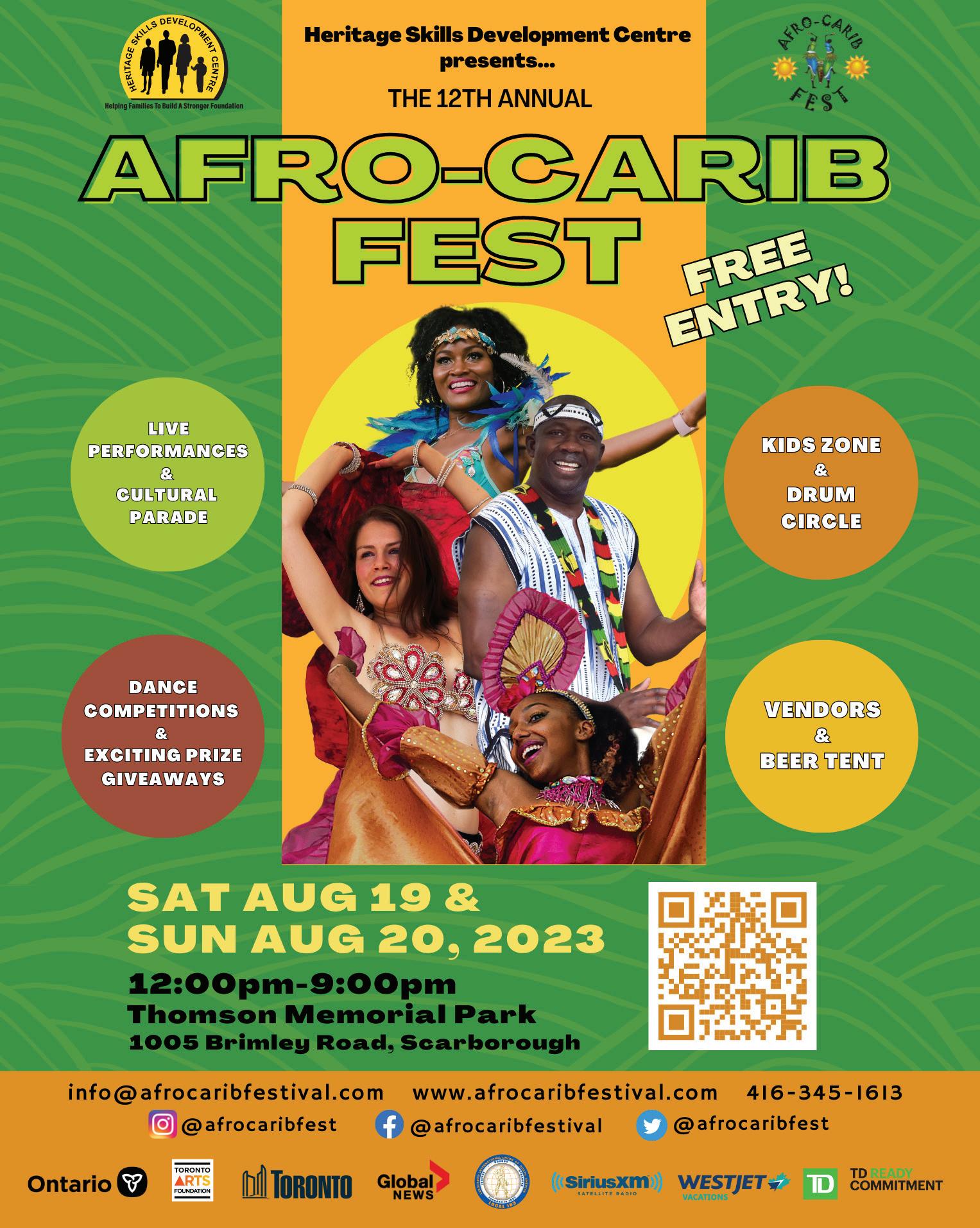








































eral governments regarding funding, Brandon notes, “While that bickering goes on back on forth, left in the middle are those folks.”
There has been local and ethnic media attention with regards to the refugee crisis in Toronto. During this heat wave in Southern Ontario, many people were inclined to spend minimal time outside, but this was not an option for about 200 asylum seekers in Toronto. They had no place to go and were sleeping on the sidewalk outside a Toronto shelter assessment and referral centre located at 129 Peter Street near Peter St and Richmond Street.

Olivia Chow, Mayor of Toronto, raised the alarm regarding the sad state of affairs in Toronto. She states, “We know that our shelters are full. We also know that a third of the residents are refugees. We also know that refugees are a federal responsibility. We need at least $160 million from the federal government to help us in sheltering these refugees.”
The question is, what can we do as a community to help them out of this dire and unacceptable circumstance? Brandon Gonez interviewed refugees on The Brandon Gonez Show. He posted on TikTok (@brandongonez), ”Desperate refugees who came to Canada looking for a safe haven are now living on the streets.” He asked one asylum seeker, “How hard has it been on you,” who responded, ”So hard. It is unspeakable. It is so hard.”
Brandon states, “The problem is that the City of Toronto states that there is no more space in its shelter system and the federal government needs to pony up some cash to help create that space.” In spite of the bickering between the provincial and fed-
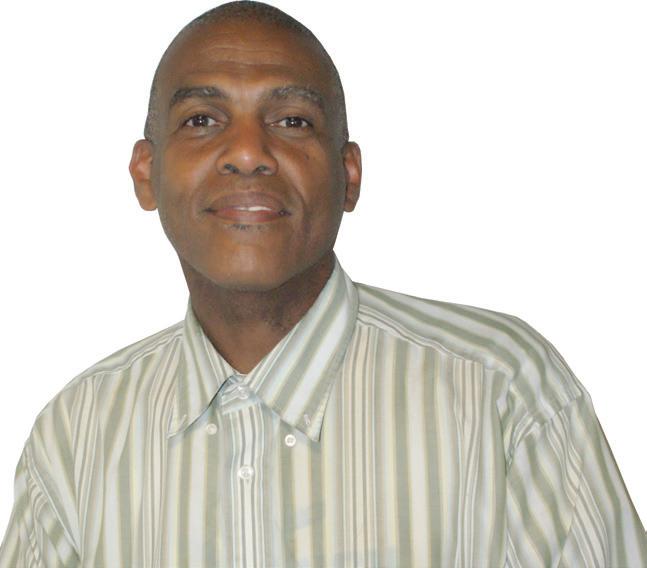








On Monday, July 17th, 2023 prominent members of the Black community, under the leadership of Gwenyth Chapman gave a press conference in front of the shelter. It was intended to address the discouraging and concerning treatment of over 100 Black African refugees in Toronto, Canada living and camping on the sidewalk outside the shelter at 129 Peter Street. They were motivated to act immediately to put pressure on governments to act. Torontonians are in shock about the continuous poor treatment and consideration for the refugees. They are demanding that the governments take some immediate action to provide temporary indoor accommodations while all levels of government work on a long-term solution to this issue.
In response to this desperate situation, Chapman announced that it was only on July 17th, that they were able to get tents after weeks of being on the streets.
Justice Macleod reached out to Pastor Judith James of Revival Tabernacle and with the help of Ainsworth Morgan of 100 STRONG obtained transportation to house the refugees there. The CEO of Paramount Food gave 20K to assist the Black leaders with helping the refugees,

On July 18th, the federal government announced $212 million in funding to boost housing for asylum seekers in which $97 million will be allocated to Toronto. City officials confirmed that there has been a 50% increase in the number of asylum seekers and refugee claimants within the last 20 months. Mayor Chow was hoping for an extra $157 million from the federal government, but this did not materialize.






Student’s stay at home and some adults are walking for miles to get to their destination all because of a hike in transportation fees. This comes as the Nigerian government claws back much-needed subsidizing money that goes to assist its citizens.

Africa’s most populous nation has seen a hike in the cost of food and transportation since the fuel subsidies ended. These subsidies cost approximately $10 billion dollars a year and made the country’s gasoline prices the cheapest globally.
The government has since declared a case of emergency countrywide. This state of emergency will allow the
government to take exceptional steps to improve food security and supply, as skyrocketing prices are causing widespread hardship.
“The move will trigger a range of measures, including clearing forests for farmland to increase agricultural output and ease food inflation,” Dele Alake, a spokesman for President Bola Tinubu told reporters.
Following President Bola Tinubu’s removal of fuel subsidies and exchangerate reform, the naira fell by 40% after its peg to the dollar was removed. Even before Tinubu cut subsidies, consumer-price growth had accelerated to an almost 18year high of 22.4% in May in Nigeria.
Even though these cutbacks are causing problems in the streets, the stock prices have risen to their highest level in 15 years, and investors see the government’s decision on the currency as crucial when it comes to elevating economic growth.
Food takes up a huge part of the Nigerian household budget and currency weakness still adds pressure to the cost of living in the country. The World Bank fore -
casts economic growth could quicken to 4% by 2024 from an average of 2% since 2015, yet Nigeria’s financial forecast does not look bright.
According to the International Monetary Fund, the price of food went up by more than 20% in sub-Saharan Africa between 2020 and 2022, partly reflecting global trends and the fact that the region imports many of its top staples.
The spokesman for the President said, “This has led to a significant drop in demand, thereby undermining the viability of the entire agriculture and food value chain.”
Ayo Teriba, the Chief Executive Officer of Economic Associates Ltd., a Lagosbased advisory firm revealed that cutting the subsidies might not be enough.
He believes the new government should declare an emergency in all sectors of the economy including power, security, and petroleum, as well as food, because they all need urgent attention.
A National Commodity Board will be created to continually review food costs, maintain a strategic reserve, and moderate
spikes and dips in prices while the central bank will continue its funding of the farming sector.
The Nigerian government plans to release 500,000 hectares from land banks, which includes clearing forested areas to increase available farmland and boost the food supply.
Long periods of insecurity and recent floods in the country’s north-central region (which is very instrumental in food production) have reduced farming outputs, which in turn have led to a spike in food prices nationwide.
According to a report by Mercy Corps (a humanitarian organization operating in the area) price hikes can be seen in food costs in Borno State in Northern Nigeria, where prices jumped 36% and transportation fares 78%, just one week after the subsidies were cut. This has led to an increase in hunger and petty theft at the community level.
After reading the report and assessing the situation I am left to wonder how much of this is natural, and how much is planned?

July has been so hot that scientists calculate that this month will be the hottest globally on record and likely the warmest human civilization has seen.
The World Meteorological Organization and the European Union’s Copernicus Climate Change Service have reported that earth’s temperature has been temporarily passing over a key warming threshold. Temperatures are 1.5 degrees warmer than pre-industrial times for a record 16 days this month. Scientists say that such shattering of heat records is a precursor for future climate-altering changes as the planet warms. They claim that the changes go beyond just prolonged heat waves and include more flooding, longerburning wildfires and extreme weather events that put many people at risk.
There are droughts happening all over the world: Spain, which is going through yet another heat wave this year, one so extreme that virtually no aspect of daily life has been left untouched. Dishes are left unwashed overnight when water allowances run out. Cows raised for gourmet meat risk going thirsty. Tourists heading to a water sports destination are met with hard mud. These stark scenes present themselves as Europe endures its driest period in at least 500 years.
In Dubrovnik, Croatia’s top tourist destination, strong winds prevented the deployment of aircraft. The fire was under control as of Wednesday. In France more than 300 firefighters were battling to contain fires near the city of Arles last Tuesday, while several more fires broke out in southwestern France and the southern Bouches-du-Rhone department was placed under a “red alert. 61 wildfires have erupted across Greece. The blazes killed two people in the coastal area of Magnesia, north of Athens and forced a new wave of evacuations. Finally, in Italy firefighters battled nearly 1,400 fires between Sunday and Tuesday, including 650 in Sicily and 390 in Calabria. Three elderly
people died in the region of Palermo, in Sicily. Another 98-year-old man was killed as fire consumed his home in Calabria.
The climate seems to be going crazy at times, and if you had a chance to read last edition’s cover story Don’t Play God Part I, you will see that I presented information that points towards global leaders, and large corporations being solely responsible for all the damage that is happening in our world currently.

Geoengineering is a new concept, and many of its initiatives only exist on theoretical or small-scale terms. This of course poses certain drawbacks and introduces unknown climate risks. Geoengineering projects have been altering earth’s systems in unintended ways. Since the side effects of iron seeding or aerosol injections cannot be fully known unless put into practice, these initiatives present moral hazards to scientists.
Furthermore, geoengineering could have significant levels of uncertainty and risk with respect to its impact on the: global climate system, natural ecosystems, weather patterns, biodiversity, economic sustainability and other considerations such as human rights. These possible risks and impacts carry significant uncertainties and have governance and ethical implications.
All of the factors have added fuel to the smoldering disagreements among climate scientists, creating what is likely the most significant rift in the world of atmospheric science and climate studies in years. Academic factions have published a series of dueling petitions as part of an increasingly visible and contentious battle for control of the scientific narrative— and ultimately over how to tackle climate change as emissions continue to rise. One side says that humanity may doom itself by refusing to look into potential chemical means of cooling our atmosphere. The other claims that undertaking such research could lead to disastrous consequences that we can barely imagine.
It is why some scientists are saying that geoengineering should not be seen as a substitute for action to rapidly reduce greenhouse gas emissions and adaptation to the adverse effects of climate change. Interestingly enough, the mainstream media is pushing this agenda, highlighting all the reasons why there needs to be
more done when it comes to dealing with climate control. What I don’t understand is why they continue to focus on the actions of individuals like you and I, when the real damage is being inflicted by large corporations.
As people around the globe have become increasingly exposed to the impacts of our climate crisis, the entities with perhaps the most power to stop the crisis are being protected. According to selfreported numbers, the top 15 U.S. food and beverage companies generate nearly 630 million metric tons of greenhouse gases every year. That makes this group of only 15 companies a bigger emitter than Australia, the world’s 15th largest annual source of greenhouse gases.
Let’s take a moment to look at how this all works. When a company makes a product, that product requires raw materials that created their own emissions during harvest, extraction, refining, etc. (known as upstream emissions); and when a consumer uses that product, there are further emissions that come from the product’s use and eventual disposal (known as downstream emissions). Failing to account for, or address these emissions means that the vast majority of greenhouse gases attributable to corporations and their products are falling outside of well-publicized corporate climate commitments. In other words, the impact of these corporations is being ignored. Corporations, with their outsized influence and power in today’s world, have an even larger role to play. They are able to drive policy change, shape consumer preferences, and rapidly respond to the necessities of climate change at a scale and pace beyond any other political or private entity. As some of the entities most responsible for putting us in the crisis we’re in today, it’s time for companies to take full responsibility for their climate footprints.

Put quite simply, there is a gag order on scientists. The public has been trained and conditioned to believe that federal agencies like the Environmental Protection Agency (EPA) exist to watch over them and warn them of any potential dangers. This notion could not be further from the truth. These institutions as a whole exist to hide threats from the population, not to disclose them. We continue to convince
ourselves that if there was really anything they should be concerned about, our world leaders would tell us. Again, this could not be further from the truth.
One scientist has come out, and because of his stance he was fired. Michael Davis is now a former EPA Environmental Engineer who is currently working with GeoengineeringWatch.org. Michael was recently terminated from the EPA for telling the truth about two extremely dire public dangers: the highly toxic fallout from geoengineering, and the willful contamination of the public water supply with industrial waste.
He was terminated for raising the issues of anthropogenic deposition of aluminum due to atmospheric geoengineering. In addition, he brought up the industrial hazardous waste byproduct of fluoride known as HFSA (being sold primarily by the phosphate fertilizer and aluminum industries) to drinking water utilities for disposal into America’s drinking water systems.
The EPA like other governmental regulatory agencies are corrupt to the core, completely dysfunctional and have been completely hijacked by the multinational corporations. The “P” in EPA stands for protection of corporate profits and not for protecting human, animal and environmental (or biosphere) health.
It’s hard to find any scientist who will honestly say that solar geoengineering should be deployed anytime soon — or ever. Although reflective particles already make their way into the atmosphere (both from aerosol pollution and volcanic dust and ash), purposefully altering the skies already pumped full of carbon dioxide seems misguided at best — and disastrous at worst. Solar geoengineering isn’t a true climate change “solution.”
Is climate change a hoax? It depends on where you are getting your information from, and whether you are able to analytically read between the lines. As information consumers, we have to really take the time to decipher real from fake, which can be difficult at times. What I do know is that something is not right; are we really open to trusting individuals (world leaders) who at the end of the day are pushing an agenda that serves them. Something to think about.
There is an increasingly visible and contentious battle for control of the scientific narrative
One of the most important decisions you’ll ever make in life is deciding who to trust. I know that we all have a story where trusting the wrong person has gone wrong. Trusting the wrong person can result in abusive relationships, being taken advantage of, financial losses, and many more undesirable outcomes.
This week, I want to share a newer development that has not been discussed readily, but what it does is put us, the citizens of the world, in a position where we are forced to trust leaders who may not have our best interest at heart. Unfortunately, our history has presented us leaders who manipulate people to follow them, even when it’s not in the followers’ economic or other interests. They do this by using emotion and identity to attract and manipulate their followers. They define in-group and out-group by manipulating emotions, especially fear, anger, and outrage. Through emotional per-
suasion, leaders get followers to adhere to a particular partisan identity, and they emphasize that by sticking with them, followers can avoid harm.
In recent years, concern has been expressed in both scholarly and popular literature about the dangers of scientific developments that could be used to control and manipulate human behavior. There are fears that behavioral techniques have advanced to such an extent that they threaten the fundamental values of Western civilization.
It is one of the reasons that when I found out that The Rockefeller Foundation announced it had partnered with the World Health Organization (“WHO”) “To expand global pandemic preparedness in an era of climate change,” the alarms in my head went off! We have seen how our global leaders have used manipulation to evoke trust during the pandemic, actions that have caused severe harm to many of us. Let’s take a look at what they have in store for us.
The Rockefeller Foundation launched the partnership with the WHO Hub for Pandemic and Epidemic Intelligence on the sidelines of the 76th World Health Assembly (“WHA”). The Seventy-sixth World Health Assembly was held in Geneva, Switzerland, from May 21st–30th, 2023. The World Health Assembly is the decision-making body of WHO. It is attended by delegations from all WHO Member States and focuses on a specific health agenda prepared by the Execu-
tive Board. The main functions of the World Health Assembly are to determine the policies of the Organization, appoint the Director-General, supervise financial policies, and review and approve the proposed programme budget. They also meet to “negotiate” proposed amendments to the International Health Regulations (“IHRs”).
The Rockefeller Foundation’s announcement dramatically titled ‘One Health in practice – Preventing the Next Pandemic Before Communities Suffer’. A topic which is more in line with the Foundation’s announcement which makes it clear that the pandemic, climate change and surveillance ideologies have merged into one agenda.
The Rockefeller Foundation announced it is investing US$5 million to accelerate priority projects of the WHO Hub for Pandemic and Epidemic Intelligence to drive global collaboration in genomic surveillance, adoption of data tools for pathogen detection, and assessment of climate-aggravated outbreak threats.
With support from the Government of the Federal Republic of Germany, the WHO Pandemic Hub for Pandemic and Epidemic Intelligence was established in September 2021. The WHO Hub for Pandemic and Epidemic Intelligence (the WHO Pandemic Hub), facilitates a global collaboration of partners from multiple sectors that supports countries and stakeholders to address future pandemic and epidemic risks
with better access to data, better analytical capacities, and better tools and insights for decision-making.
The WHO Pandemic Hub works closely with Member States and WHO Regional and Country Offices to strengthen their data-sharing capacities and enable partners from around the world to collaborate and co-create tools to gather and analyze data for early warning surveillance. With a presence in more than 150 countries, six Regional Offices, and its Geneva Headquarters, WHO’s reach gives them the ability to treat pandemic, epidemic and public health risks with equal urgency and diligence around the globe.
So, as things stand, it has been decided by a small group of people at the World Health Assembly that a select group of undisclosed “partners” will have total global control over the prediction, data and information of “future pandemics.” Pandemics that could be declared at the whim of WHO’s Dictator General in the name of health, environment or climate.
WHA and WHO’s partners have not been given the authority to make these decisions on behalf of the world, and yet more than 8 billion people in the world do not have a say. We are to “trust” that these individuals have our best interests at heart, which is difficult after seeing all the harm that has been caused.
dynamic culture of the Caribbean region to a global audience through authentic and engaging experiences.
paul@carib101.com

TC REPORTER
The launch of the “One Caribbean App “will certainly revolutionize the experiences of travellers from all over the world visiting the Caribbean. It is the brainchild of Daryl Marcano who created the One Caribbean Project.
The vision of this app is to celebrate and preserve the vibrant culture of the Caribbean region through innovative and immersive experiences that inspire global appreciation and understanding. There are many aspects to the mission of this project, but the overall goal is to promote the diverse and
They drive to create a greater appreciation and understanding of Caribbean culture by showcasing its unique attractions, arts and history. They are committed to supporting local communities and businesses by providing a platform for cultural expression and development. Through their efforts, they aim to celebrate the rich cultural heritage of the Caribbean for future generations.
The One Caribbean Project is a fascinating innovative and creative pursuit that will bring multiple benefits to those who use the app. It is a collaborative initiative that brings together Caribbean countries, tourism boards, and stakeholders to promote and preserve the: natural beauty, cultural heritage and economic reality of the innovative mobile application designed to revolutionize the way travellers experience the breath-taking beauty and vibrant culture of the Caribbean Island.
The islands featured in the app include:
• Trinidad & Tobago-Always something in season
• Suriname - A beautiful country
• St. Vincent & The Grenadines - The Caribbean you are looking for
• Sint Maarten - Smile at life
• St Lucia - Let her inspire you
• St Kitts & Nevis - Venture deeper
• Jamaica - Come back to the vibes
• Haiti - Land with a soul
• Guyana - Nature’s beating heart
• Grenada - The spice of the Caribbean
• Dominica - Discover paradise
• Curaçao -No better time than now
• Cuba - A multi-faceted destination
• Cayman Islands - Make better memories
• Barbados - Work from here
• Bahamas - Fly away
• Antigua & Barbuda - Your wellness destination
Daryl Marcano, creator of the Caribbean Project shares, “We are thrilled to introduce the One Caribbean App to travellers worldwide. The app encapsulates the true essence of the Caribbean, offering users an immersive experience and unforgettable experience. From pristine beaches to vibrant culture, the One Caribbean App is your passport to discovering the wonders of this extraordinary region.” This highly immersive and hugely informative app will certainly enrich and educate the heart of visitors to the Caribbean. The app is currently available on the Apple App Store, and it is compatible with iPhones on IOS 16 +.
Anyone interested in learning about the One Caribbean App can check the following:

• www.onecaribbeanproject.com

• Facebook: One Caribbean Project
• Twitter:@onecaribbeanproject
• Pinterest:@onecaribbeanproject
The Rockefeller Foundation has been given the authority to make these decisions on behalf
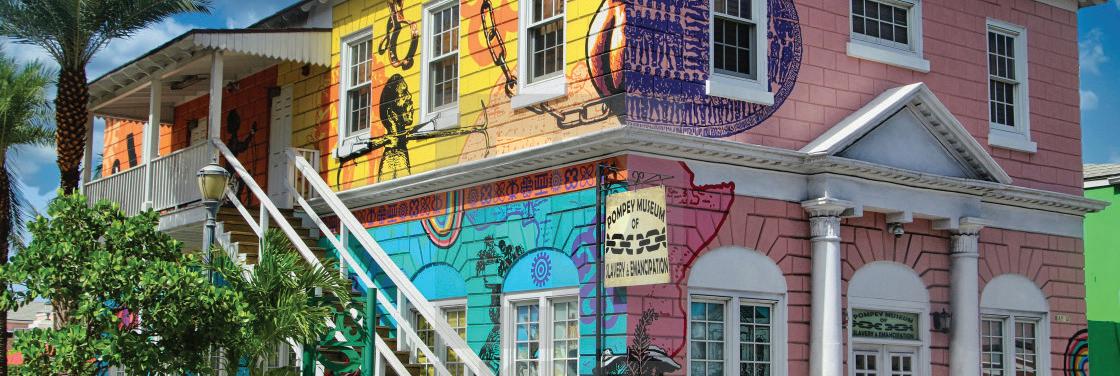
an expansive Nassau-by-foot itinerary. We will present you with an experience that one could cover in about 16 minutes without stopping - but of course, we recommend taking time to appreciate each one. Without further ado, let’s get walking!
Fort Fincastle
The Supreme Court of The Bahamas (Bank Lane, Not Open to the Public)
With gorgeous white sandy beaches and crystal-clear turquoise waters, Nassau, the capital city of the Bahamas, is known for its breathtaking natural beauty and vibrant culture, making it a popular destination for tourists.
The Bahamas is situated on the edge of the Atlantic Ocean and the Caribbean Sea, providing an ideal environment for vibrant coral reefs and diverse marine life. Nassau has a fascinating history and a vibrant local culture. It showcases charming colonial architecture, pastel-colored buildings, and historic landmarks like Fort Charlotte and Government House.
The bustling old town of Nassau is packed with things to see and do. Occasional spots of traffic can make it harder to get around by car or taxi, but a self-guided walking tour suffers from no such pitfall. With such an incredible climate, some locals even believe that the best way to experience The Bahamas is on foot - with your feet in the sand and the cool breeze at your back. Rich in both history and beauty, Nassau is an ideal locale for an unforgettable walking tour.
With so much to see in Nassau we are going to embark on a novel experiment. In the next two editions, we will take you on

Bennet’s Hill, Prison Lane, open daily, with guided tours between 8 a.m. and 4 p.m We start our expedition off with much gusto, arriving first at the imposing Fort Fincastle. Time your visit on Wednesday or Friday to catch the historic re-enactments at 11:30 a.m. concluding with the noon gun. The fort was constructed in 1793 from local limestone by the Governor who named it after one of his lesser titles. The fort, whimsically shaped like a boat, was equipped with half a dozen guns to protect the town from pirates. However, none of the guns was ever fired in anger. (Most asked question? “What time is the noon gun?”)
Queen’s Staircase
(Elizabeth Avenue, Always Open)


Descend from the fort to the town by stairs carved out of solid limestone rock and finished in 1794 to create an escape route from the fort above. The staircase was eventually named to honour Queen Victoria, many years after completion. Water cascades down the side of the stairs to a pool below, where a walkway goes between high stone walls, tropical plants and trees, keeping the area cool. Originally 66 steps, one was paved over when the lower pathway was covered in asphalt.
This grand Neo-Georgian-style building built in 1921 is worth a look for its handsome design. It is similar to the Central Public Building to the north. Due to a serious break-in a decade ago, the building is no longer open to the public. The exterior remains impressive, rendered in a gentle pink - a quintessentially Bahamian aesthetic.
Parliament Square (East Bay Street, Always Open)
This elegant public space is always busy, surrounded by impressive public buildings including the Parliament of The Bahamas, which was constructed in 1815 and - as you might now predict - is a pleasing pink! If you happen to visit on a day in which the House is in session, you can even watch the government at work via the visitor’s gallery.
Queen Victoria’s Statue (Parliament Street, Always Open)
One of many statues around the British Commonwealth dedicated to the Queen who ruled an Empire between 1837 and her death in 1901. This statue was dedicated in 1905 and makes a great backdrop for a photo op. It sits in front of the Bahamian Senate Building.
Nassau Straw Market (West Bay Street, open Monday to Friday 8 a.m. to 8 p.m)
If, at this point of the tour, the Caribbean sun is beginning to take its toll, take a detour to this world-famous straw market, where visitors can buy handmade hats, baskets and bags locally made from straw. The tradition of straw weaving dates back to the days when Bahamians made straw
fish traps and baskets to carry fruit. Conch shell jewelry, wood carvings, gifts and souvenirs are also available in profusion. Currently, about half of the 300 pre-pandemic vendors have returned and opened their stalls.
The Last Stop: Pink Bricks Hide an Important Story
Pompey Museum (Bay Street, open Monday to Wednesday and Friday and Saturday from 9:30 a.m. to 4:30 p.m., Thursday from 9:30 a.m. to 1 p.m)
The Museum of Emancipation and Slavery is housed in a 1760s original arcaded building. It is still distinguishable by the pair of Corinthian columns in front, along with its traditional colonial pink colour. Originally, it was used as a market from which commodities of all kinds were sold, including human beings. The museum, which opened in 1992, is named for Pompey, an enslaved man who raised a revolt against unfair plantation conditions. Changing exhibits and multimedia kiosks are packed with content and relics of slavery. In 2018, a powerful mural was added to the building highlighting events in Bahamian history. With a good bit of walking and a whole lot of history now under your belt, we recommend finishing this easy walking tour of the Bahamian capital with a visit to one of the many excellent bars, cafés and restaurants along Bay Street. We hope you’ll look forward to Part 2 of our walking itinerary next month, which starts nearby and ends at a famous rum distillery. In the meantime, head over to www.bahamas. com to start adding a few of your own stops.
Last week I received an interesting, and I must say disturbing email from Gregory Tomchyshyn and the entire CitizenGO team.
There are recent events that transpired at the annual Pride Toronto parade on June 25th, 2023, that are alarming, and to the CitizenGo team, these shocking incidents must not go unchecked. Apparently fully naked individuals were openly flaunting their nudity in front of children, promoting the normalization of the LGBT sexual lifestyle.
Toronto’s Pride Parade has not
been without controversy with some individuals finding public displays of affection between same-sex couples, and individuals dressed in provocative attire during the parade inappropriate, and offensive.
This year, some attendees have expressed their outrage at what they witnessed and have spoken to the fact that these actions blatantly violate Canada’s public decency laws and negatively impact our children’s impressionable minds.
It was reported that newly elected Toronto Mayor, Olivia Chow, was even seen participating in the parade where these actions took place. The CitizenGo team wants to hold her and the City of Toronto accountable for allowing and endorsing these deliberate violations of section 173 of the Criminal Code.
So far, over 13,322 individuals have demanded that the City of Toronto enforces the Criminal Code regarding public exposure!

“Scantily clad people in hyper-
sexualized clothing displayed immoral sexual fetishes, while some individuals even chose to GO FULLY NAKED in front of children to normalize the LGBT sexual lifestyle,” shared Gregory Tomchyshyn, Campaigner for CitizenGo Canada. “These naked men held signs such as, ‘Life is short: play naked’ and ‘Good things happen when you are naked,’ openly flaunting their nudity in front of children. This behavior clearly violates Canada’s public decency laws and aims to indoctrinate our children into the LGBT lifestyle, exposing them to inappropriate sexual content.”
I was curious, so I went and took a look at Section 173 of the Criminal Code of Canada (CCC), which explicitly states that: Every person who, in any place, for a sexual purpose, exposes his or her genital organs to a person who is under the age of 16 years
1. Is guilty of an indictable offence and
is liable to imprisonment for a term of not more than two years and to a minimum punishment of imprisonment for a term of 90 days: or
2. Is guilty of an offence punishable on summary conviction and is liable to imprisonment for a term of not more than six months and to a minimum punishment of imprisonment for a term of 30 days.”
It looks like Gregory might have a point. Does this mean that the Pride Toronto parade is blatantly violating laws with the full approval of the city administration. Hmmmm!
Community, I would love to hear your thoughts, and I would love to hear what the federal government has to say about this. Are we dealing with a clear double standard, and if so, why? Also, who are the parents who brought their children to this event knowing that nudity was on the agenda?
paul@carib101.com

The Lifelong Leadership Institute (LLI) through its signature flagship program Leadership by Design continues to make a difference in the lives of Black, African, and Canadian youths across the Greater Toronto Area. It is currently accepting applications for fall 2023 at the website: www.1lilelongleaders.com.
Students who have completed Grade 9 and are starting Grade 10 in September 2023 are encouraged to apply. The LBD is intended to inspire and prepare our youth to be responsible leaders at all times, in all spaces, locally, and for the good of all.
The special programs titled “SummerUp 2023,” are designed to serve and support the personal and profession-
al aspirations of Ontario’s Black youth. The program is developed and presented by the Lifelong Leadership Institute, and the quality of the SummerUp experience is assured by the contributions of a diverse group of individuals, educators, institutions and corporations. All are committed to championing the well-being, development and advancement of Black youth.
One of the SummerUp courses being offered is titled, “SummerUp Electronics & Robotic - Using the Arduino.” In this course participants will learn the basis of the physical and programming components necessary to create circuits and devices. Through activities using a virtual circuit simulator and a physical electronic kit, students will practice creating technological solutions to real-world solutions.
Another one of the SummerUp programs is “Microsoft Excel - An Introduction.” This course introduces the effective use of Excel, which is a part of a package of business applications known as Microsoft 365 (formerly known as Microsoft Office). Among other applications, Microsoft 365 includes: Excel, Word and
PowerPoint. This course can potentially benefit high school or post-secondary students by ensuring that they understand that without data-management skills, it is near impossible to be proficient in most careers. Learning Excel will appeal to the student who understands the value of adding expertise in Excel to their resume. Students who have no previous knowledge of Microsoft Excel, or little knowledge will benefit from these three virtual sessions held on: Monday, August 14th, Tuesday, August 15th, and Wednesday, August 16th.
One of the unique programs that LLI will be offering during the summer of 2023 (in partnership with University of Toronto School) is Global Perspectives. In the promotional material sent by the LLI, it states that in this big-ideas course students will explore big thoughts and concepts through reading, writing and unusual games. They will collaborate in their search for new knowledge, and they will end up more curious than ever. As well, they will improve their writing skills. If ever there was a course that gave students a challenging and enjoyable platform for learning, and preparing
for school in September, this one-week course is it.
Some of the benefits of Global Perspectives include the following:
• An opportunity for Black youth to socialize and collaborate
• Pathways for unconventional ways of thinking and viewing their world
• An environment for fresh and novel ideas
• An innovative platform for learning and future academic success
• Exercises that develop writing and discussion skills
Students who are accepted in this SummerUp program will engage in five days of classes from Monday, July 31st to Friday, August 4th at the University of Toronto School located near the intersection of Spadina Avenue and Bloor Street. There will be a showcase of student’s work and a tour of the UTS campus for any interested parents.
Anyone interested in learning about LBD can check www.ifelongleader.com

Dr. Keren Braithwaite remembered for educational activism and community service
Is it true that fully naked individuals were openly flaunting nudity in front of children at the Pride Parade?
you feel lost, confused, and alone. You have no idea how life is going to look in a few months…
est increase in rate over the study period was seen in American Indian and Alaskan Native populations.
simone@carib101.com
You are six months pregnant, and you are on your way home from work. As you walk, you are thinking about your life, and the world that you are bringing your child into. You don’t live in the best area of the city, and this is evident as you step over a sleeping man in the middle of the sidewalk. You have experienced some discomfort during your pregnancy, but you have limited access to prenatal care and educational resources even though it is vital for ensuring a healthy pregnancy and birth outcomes.
You are surprised that you still have a job, and now with only three months to go, you have to worry about whether you are going to have enough money to take care of your child. You are not getting maternity leave, and you are barely making ends meet now. As you climb the stairs of your apartment, tears run down your face;
A new study has found that maternal mortality rates in the U.S. dramatically worsened from 1999 to 2019. The overall rates of maternal mortality are far higher in the U.S. than in other industrialized countries. According to the study’s findings, there were an estimated 12.7 maternal deaths per 100,000 live births in the U.S. in 1999. In 2019, this rate more than doubled to 32.2 deaths per 100,000 births. By comparison, Canada currently reports 10 deaths per 100,000 live births, the U.K. reports 9.6 deaths per 100,000 births, and Norway and Denmark report 2.7 and 2.4 deaths per 100,000 births, respectively.
The research, published in July in the journal JAMA, reveals maternal mortality rates more than doubled in the U.S. in the past 20 years and bolsters existing evidence that certain racial and ethnic groups are at a greater risk of maternal mortality than others. The study used data on deaths and live births from the National Vital Statistics System and generated estimates of maternal deaths by state, race and ethnicity from 1999 to 2019.
Women of African descent consistently had the highest maternal mortality rate across each year studied, and the larg-
African American women face barriers in accessing high-quality healthcare services, including prenatal care. These barriers are due to financial constraints, lack of health insurance, limited availability of healthcare facilities in certain neighborhoods, and implicit biases within the healthcare system. They are also more likely to experience poverty and have limited access to resources, which can impact their overall health and the care they receive during pregnancy.
“When you think about what do Black people and Indigenous people have in common, one of the greatest factors is systemic racism,” said Dr. Amanda P. Williams, clinical innovation adviser at the California Maternal Quality Care Collaborative and an adjunct professor at the Stanford University School of Medicine.

Systemic racism in the U.S. affects where people live and work, which also impacts their access to quality healthcare and likelihood of developing various diseases. The Centers for Disease Control and Prevention (CDC) states that, in part due to these factors, Black women are three times more likely to die from pregnancy-related causes than White women.
Studies have also shown that racial bias and discrimination in healthcare settings can negatively affect the quality of care provided to minority patients, including African American women. This bias can lead to delays in treatment, and suboptimal care during pregnancy and childbirth. Preexisting chronic health conditions, such as hypertension, diabetes, and obesity, are more prevalent among African American women. These conditions can increase the risk of complications during pregnancy and delivery.
Like anything else, unless we discuss these issues, nothing will be addressed. Africans living in the diaspora go through a lot living here in North America, and dealing with these disparities requires a comprehensive approach that focuses on improving access to quality healthcare, addressing implicit biases in the healthcare system, reducing socioeconomic disparities, and providing adequate support during and after pregnancy.

Additionally, community engagement and awareness campaigns can help raise awareness about maternal health disparities and advocate for changes in policies and practices to improve outcomes for African women and other vulnerable populations.
paul@carib101.com
The importance of agriculture to the Ontario and Canadian economy cannot be overstated. As a major source of revenue, it brings in billions of dollars to the Ontario coffers. In the face of the chronic shortage of domestic workers over the years, the Seasonal Agricultural Workers Program (SAWP) has been filling this need. The need is even more pronounced as fruit and vegetable farmers continue to recover from the aftermath of COVID-19 pandemic. There have been many changes and adjustments made to deal with the new realities of agriculture post-COVID-19.
I interviewed Ken Forth, President of Foreign Agricultural Resource Management Services on Wednesday, July 26th, 2023, and gave me updates about the state of SAWP. Forth is also a farmer himself and he cultivates broccoli on a farm just outside Hamilton. He told me that for 2023-2024 he estimates that there may be between 18,000 - 20,000 seasonal farm workers.
Ever since the first batch of 266 workers arrived in 1966 from Jamaica, the Caribbean has a regular source of committed and dedicated workers. They come not just from Jamaica but also: Barbados, Trinidad and Tobago but the Eastern Caribbean nations which include Antigua and Barbuda, Commonwealth of Dominica, Grenada, Monsterrat, St. Kitts - Nevis, St. Lucia, St. Vincent and the Grenadines as well as Mexico.

Ken reiterated that these domestic seasonal workers have access to full medical coverage and dental benefits. They are covered by the Ontario Health Insurance (OHIP) upon their arrival in Ontario as well as Workplace Safety Insurance coverage.
In addition, they have supplementary extended medical, dental and insurance plans at a minimal cost to them. The SAWP program is a fully developed one that arose out of a long-standing Memorandum of Agreement signed between the Canadian government and foreign governments of these countries.
Ken told me that he was aware of the criticisms that advocacy groups and activist organizations such as Justice for Migrants and Workers for Migrants have directed at some of the challenges and issues of SAWP. There were several seasonal domestic workers who died of COVID-19 and were injured on the jobs. He assured me that they have access to WSIB benefits if their claims are legitimate, and it occurred on the job. He is convinced that no one will be denied access to these benefits which are intended to help injured workers.
Ken noted that of the 1,100 farms in Ontario which have access to seasonal workers there are seasonal housing inspections conducted. This is done to ensure that they will be fully compliant as this
was one area that was lacking in previous inspections. It has also been highlighted by Justice for Migrant Workers in their reports. Ken is concerned that critics of SAWP have overlooked the benefits that have accrued to the individuals and their families over the years as many of them have used their income to support their families and pay for their children’s education in postsecondary institutions.
Ken believes that there is hope for the expansion of SAWP as there will be increasing numbers of farmers retiring in the coming years. The aging of current farmers and their desire to give up farming will further exacerbate the labour shortage. This potentially could impact the economic competitiveness of Ontario as there could be fewer agricultural revenues to ensure a viable future. There is a need to make agricultural jobs more attractive to Canadians in order to ensure that it is seen as a viable and lucrative career choice for young Canadians.

As I walked towards the venue, I could hear the laughter, and smell the ganja! I had made my way to Hamilton to attend the annual Canna Crawl, co-hosted by Reena Rampersad. She had invited me in the past, but I had not found the time to visit. I had heard so much about the crawl and I wanted to experience it for myself in real time. Discreetly tucked away at 863 King Street East, the indoor/outdoor event was off the hook. People were talking, laughing, and of course partaking of the greatest herb on the planet; cannabis.
For decades, cannabis has attracted a negative stigma, not just in the Caribbean, but all over the world. Lawmakers have come down on cannabis producers and users with the same might and force as they have with deadly narcotics like cocaine and heroin. What is talked about less is all of the great aspects of this wonder herb, and no one advocates for cannabis more than Reena Rampersad.
Reena is a cultural foodie and cannabis connoisseur, originally born in Toronto but of Trinidadian descent. She spent the early part of her career as a social worker in the city of Detroit, Michigan, but her inter-
est in food culture would eventually steer her into a permanent career as a Restauranteur.
As an open supporter of cannabis, Reena utilizes her culinary skills and reach to help positively influence the perceptions associated with cannabis use. For Toronto Caribbean Newspaper readers, Reena’s story is not new. As a young girl, Reena witnessed her grandmother using cannabis in the making of various salves and remedies while her father battled the law and society for his choice to partake.
Many of her family members were victims of the war on drugs and this has made her participation in the industry both personal and political. Reena has been featured on the CBC’s “The Current Episode,” “Cooking With Cannabis,” Zoomer Media’s ONE Network, alongside most major Canadian publications including: The Globe and Mail, The New York Times, The Canadian Press, Chatelaine, Now Magazine and other cannabis related projects.
What Reena has done with Canna Crawl is put together an event that offers opportunities for businesses, investors, and entrepreneurs to network and form partnerships. Canna Crawl facilitates interactions between companies, suppliers, retailers, and other stakeholders. Canna Crawl plays a crucial role in the Ontario cannabis industry, culture, and community. What I saw on Saturday July 29th, 2023, was a gathering of industry professionals, consumers, advocates, and enthusiasts, all there to commune and celebrate.
As I walked around the event, I recognized how ideal the Crawl was for companies to showcase new products and

innovations. Whether it was a new strain, a cannabis-infused product, or a cuttingedge technology, the Crawl allowed businesses to generate buzz and gain exposure within the community.
As I spoke to vendors, they openly shared their experiences, stories, and knowledge. I heard stories about how cannabis had helped with healing, and restored people’s lives. It became evident that events like Canna Crawl provide a platform to educate attendees about various aspects of cannabis, including its medicinal properties, responsible consumption, cultivation techniques, and legal developments. By promoting accurate information, events like the Crawl help dispel myths and misconceptions surrounding cannabis use. As with many of our Caribbean herbs, we do not know the value of what we have. It was only when the Canadian government said, “Yes, now it is legal,” that many of us were able to accept the use of cannabis, and still many Caribbeans turn-up their nose at this herb. There were vendors from all parts of Ontario, and not all of them were focused on cannabis. I had the chance to have a sound healing session with Nadia Ishmail from Stone and Shadow Holistic Boutique, peruse sex toys with Jennifer Harrington from Love Winx, and enjoy a dab (you have to look that one up) with the Honey Badger Extracts team.
What Canna Crawl offers is an opportunity to relax, enjoy yourself, and experience the positive aspects of cannabis culture. I want to congratulate Reena Rampersad and the Canna Crawl team for curating this impactful event. I will definitely be back.
my ability to make my complaint.”
Kuffuor told me he is being introduced to death slowly, “I am covered in radiation burns, I’ve been in and out of hospitals so many times and each time it was for standardized care for radiation exposure.”
He explained that whenever he would tell the doctors who did this to him, he would be called crazy. You have to admit; up until this point, this sounds like a movie, completely unbelievable.
Police body of Professional Standards on February 6th, 2014, an officer by the name of Ruth Armstrong decided to retaliate against me by beginning this on-going assault and harassment to stop my initial complaint.
This is hard for me. I have lost nine years. I was 34 when this started and am now 43. I have no business, no wife, no children, I have nothing, and I cannot get anything done.”
How do you know when unconventional forces attack you? This can be very hard to prove, but one man believes that he and his entire family are under such attacks here in Canada.
Meet Nana Kow Kuffuor. Kuffour is a Ghanaian living in Canada. According to him, nine years ago he rented part of a house from a shady landlord only to find out that he had unwanted company at his rental space.
Mr. Kuffuor requested his money back from the landlord and somehow Ottawa Police were called in, and as the saying goes, the rest is history.
Kuffuor told me in a matter of days after his encounter with Ottawa police his ordeal started, “I began receiving assaults by Microwave radiation and electronic harassment. These tools are very common, but just unconventional.”
“What they were doing was to clear off my phone, clear off my computer, hack my Internet, and hack my Facebook. When I went to the Police Professional Standards and told them that my complaints were being interrupted, they understood, but could not see how that would hinder
“This idea of being slowly murdered with microwave radiation weapons is something that right now everyone understands.” The Premier’s office understands, the Solicitor’s General office understands, but the OIPRD said that they would not be moving ahead with any investigations.
To add insult to injury, Kuffuor said he could not find a lawyer that would touch his case, and this includes famed attorney Lawrence Greenspon as well. “He has refused to meet me, he has refused to speak with me. He does not even want to know about my information,” Kuffuor told me.

“Every time I call, and they hear my name, they would say he is too busy, and he has been too busy for the past nine years now. The Premier of Ontario and the Solicitor General have told me it is out of their jurisdiction, but they are going to look into it, but the policing bodies are supposed to manage themselves. I pointed out to them that the SIU and the OIRPD do not have a good track record of laying charges on people. They kill Black people all the time and no one gets charged.
Since I took my complaints to the
I wanted to be exceptionally fair with this article, so I reached out to Ottawa police three times. The first time I got Police Constable Cudrasov on the phone, and these were his words.
“Do you know of unconventional weapons being used on civilians?”
Police Constable Cudrasov replied, “By Ottawa police; no! This is the first time I am having this kind of inquiry. I can inquire about it, but I don’t have an answer for you.”
I went on to ask Police Constable Cudrasov if he can put me onto another officer, or someone from his department who can shed light on this subject. He told me to go through the email route and they will reply.
After a few days of no reply to my email, I called again, this time Police Constable Cudrasov said he could not locate my email. When I challenged him to produce the receipt of confirmation of my email, he suddenly found my email, and promised to get back to me. That was almost two weeks ago. I am still waiting and so is Mr. Kuffuor.

Readers of a great age face a common problem. It’s called frailty or general weakness. The frail elderly are at risk of falls that require hospitalization, often leading to palliative care. As the condition progresses, independent living at home can become impossible. For people who have reached the end of their desire to continue, frailty presents a medical dilemma for doctors. How much frailty is needed before the doctor allows, “There’s reason enough to end life by Medical Assistance in Dying (MAID),” and would a veterinarian be the better professional to make this decision? One of the conditions that doctors must
decide at the end of life is whether weakness is reversible. This obviously makes sense when considering life or death situations, but frailty is not like a mathematical problem where there is a right or wrong answer.
Many readers know that I have always fought to end needless suffering. I have followed the edict of Hippocrates, the Father of Medicine, who taught that doctors should do no harm. To my mind, allowing crushing agony to continue is more than terribly harmful.
It is because of this attitude that I fought for five years against well-known organizations, such as the Royal Canadian Mounted Police, pharmacists, and politicians who vigorously fought against the legalization of heroin to ease the pain of terminal cancer.
Two things finally helped to legalize heroin. I visited England and Scotland where heroin had been available for 90 years for pain relief. I talked to experts about pain control, which showed that the troubling perceptions surrounding heroin
were wrong. I delivered in person forty thousand handwritten letters from readers who had seen loved ones die in pain to the Minister of Health in Ottawa. In 1984, heroin was legalized in Canada to treat pain for terminal cancer patients.
A CMAJ article reported that 53 patients who selected MAID had suffered “multiple geriatric syndromes,” a combination of medical, social and other conditions that involved unbearable suffering. These patients did not have a life-threatening disease, but their lives had degenerated to such a state that a decision to use MAID aligned with the Hippocratic oath. Other studies show that once severe frailty occurs, patients live 3.5 to four years. Weaknesses often lead to great frustration and depression. There is no universal answer to this dilemma for doctors. Some physicians will never end lives by MAID due to religious, moral, or ethical grounds. For them, there is no compromise.
My family, on the contrary, is quite pragmatic about the end of life. They
know I would not want to suffer from severe frailty. A decision to conclude enough is enough would depend on my: doctor, wife, and children. I have only half-jokingly expressed the opinion that I would want a veterinarian to help make the decision. I know how veterinarians ease the suffering of animals.

Our family has seen the lives of several much-loved dogs ended by painless injection when they are in agony. It’s a shattering moment to bear. But it has always seemed consoling to me that veterinarians and families, without being able to converse with pets, know when their suffering is unbearable and needs to end. Yet some doctors, who are able to discuss this matter with patients, often allow severe weakness and suffering to continue much too long.
So, doctors should listen hard when patients say, “Please, I want to die and end this agony.” After all, the patient is the only one who knows the extent of the pain. Prolonging unbearable pain makes no sense, not to the veterinarian.
paul@carib101.com

It was a phenomenal turnout when over 300 individuals were present for the Zoom meeting on Wednesday, July 26th, to strategize support for Kike-Kojo Thompson. As principal consultant of KOJO Institute she has received widespread mainstream media attention about former TDSB principal Richard Bilkszko who committed suicide after being present at her equity training sessions in 2021.
In the wake of the TDSB launching a lawsuit against her and the Ministry of Education conducting an investigation into the details of the training, Advocacy of Peel organized this meeting. There were: educators, community representatives, social justice advocates, and human rights activists such as Kingsley Gilliam who provided an historical analysis of this struggle.
In the email promoting the crisis
meeting, it reads, “Dear Black Community Stakeholders, anti-racism work in the province is under attack, and as a collective of Black advocates, organizations, individuals, and stakeholders, we must respond now COLLECTIVELY.”
There are concerns expressed with respect to the fact that the Ministry of Education has decided to investigate the equity training session that KOJO Institute was a part of. The email notes, “It has come to our attention that this incident is being used to fuel a right-wing response calling for the dismantling and HALT to equity and antiracism work in our province.”
This planned meeting was orchestrated to demonstrate complete, total and full support of valuable, inclusive and revolutionary equity work that Kike does with KOJO Institute. The email notes, “We will not stand idly by as the progress we have fought so hard to achieve in the fight against systemic racism and discrimination is threatened. It is imperative that we come together as a united front to address this critical situation. The meeting would provide a post for us to strategize the efforts to undermine anti-racism work in our province.”
There were many discussions, conversations, and engagements among the participants regarding strategies, processes
and protocols to follow in the days ahead.
Idris Orughu of Advocacy Peel and Kearie Daniel, co-founder of Parents of Black Children (PoBC) supported by the Ontario National Association of Black Educators hosted the event. Kathy McDonald, a Trustee with the PDSB and Karen Brown, President of the Elementary Teachers; Association of Ontario were in attendance.
The high-level summary of the meeting includes the following:
• Participants discussed the community’s concerns about the government’s approach in announcing a review of the incident to former TDSB principal that took his life
• The community spoke to and acknowledged the villainization and criminalization of the KOJO Institute and antiracism work as whole
• The very real threat to anti-racism work was identified and addressed
• The link to an equity training session and suicide was called out as misguided and irresponsible
• Many mental health providers spoke of the nuances of mental health and to the centuries of work the Black community has contributed to protecting the well-being of our children within these
systems
• Not allowing anyone to threaten the anti-racism work occurring in Canada
• Not allowing anyone to eradicate the very necessary: equity, diversity and Inclusion work that contributes to the safety and well-being of our children
There are three specific steps that will be forthcoming within the next few days such as:
1.Meeting with Minister Leece: They have requested an immediate emergency meeting with Minister of Education. Select organizations will attend this meeting and share the summary of this meeting
2. Community-Person Press Conference: A tentative date was set for Wednesday August 2nd, 2023 at 10:00 am during which a joint statement to show solidarity and determination in preventing the dismantling of anti-racism work will be read.
3.Community Statement:
They will draft a community statement that will be released and read at a press conference. This statement will represent the Black community organizations’ collective stance.
Anti-racism work in the province is under attack; Black community rally to support Kike-Kojo Thompson
ribbean was a full display. I had a chance to sit down with Jessica Wood (Director, Promotions, Blue Jays), and she shared some insights not only on the night, but what baseball fans have to expect when they visit the Rogers Centre.
“This is our second year working with the Toronto Caribbean Carnival, and we love it because it allows us to tap into a different market,” Jessica began.
multi-year $300 million privately funded renovation that will be completed between 2024 and 2025.
“Rogers Centre is home to Canada’s baseball team, and I’m delighted to see the first phase of this renovation project come to life for Blue Jays fans,” exclaimed Edward. “We’re proud of the team and we’re proud to invest in the ballpark, a landmark in the heart of downtown Toronto.”
This is your neighbourhood bar where you can grab a quick drink and bite with friends on the way to your next Outfield District destination; an ode to stadium history in a space originally planned as a transit stop.
The Catch Bar (100L right field above the visitors’ bullpen)
The fans sitting around us were cheering and high fiving my guest Rayon Brown (Founder of Helping Neighbourhoods Implement Change) who had just caught a fly ball, and we had only been there five minutes. Catching a fly ball is one of the most visually impressive feats in the sport of baseball, and when a fan catches a fly ball, it often attracts attention from other spectators, leading to applause and cheers, which was exactly what was happening. Within minutes, there was a sense of camaraderie between Rayon and the fans sitting around us, and it set the tone for the rest of the night.
On Friday July 28th, 2023, the Toronto Blue Jays hosted the annual Caribbean Carnival celebration done in partnership with the Toronto Caribbean Carnival. The Jays were taking on the Los Angeles Angels, and they had added a special edition for the night. As we walked up to Rogers Center, we heard Soca blaring over the sound system. For one night it was all about carnival, and it was great to see fans engaged with the festivities.
The night featured Caribbean Mas bands, Soca music, and performances directly from the festival. The 2023 Jr. King and Queen and individual winners threw the ceremonial first pitch and throughout the night, the Ca-
“We are pleased that we were able to provide an authentic Caribbean Carnival experience, and this was only possible because we worked closely with the Toronto Caribbean Carnival team, which allowed us to really make the experience amazing for the fans.
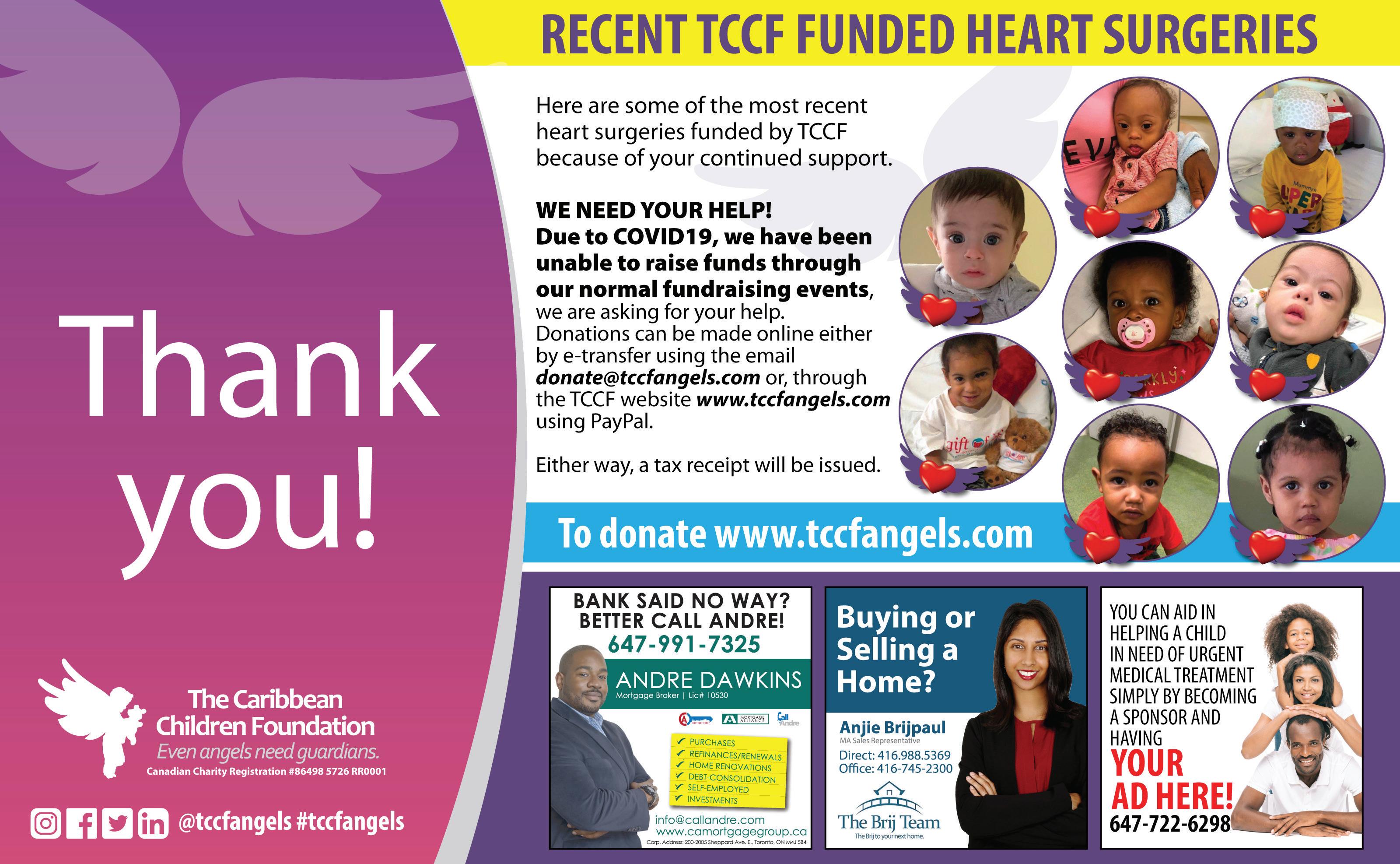
We pulled out all the stops this year, we even had a specialty cocktail (The Pineapple BayBreeze). We sold Trini doubles and Jamaican patties. It was definitely creative leaning in with the team.”
“What made your team decide to incorporate the Caribbean Carnival,” I inquired?

“For us, it is all about creating an inclusive environment,” Jessica replied. “We are always looking at ways to engage the entire city, so that coming to Rogers Centre is more of a social outing.”
While I was there, I had the chance to see how the Rogers Centre is delivering a modernized fan experience. A lot has changed, and if you haven’t had a chance to visit, there is so much to see.
Earlier this year Mark Shapiro, President & CEO, Toronto Blue Jays, was joined by Edward Rogers, Chair of the Toronto Blue Jays and Chair of Rogers and Tony Staffieri, President and CEO, Rogers, for a ribbon-cutting ceremony to reveal the largest-scale infrastructure project since Rogers Centre opened in 1989. The new Outfield District is part of a
“We’re deeply committed to supporting the team and to delivering the best fan experience both on and off the field,” Tony explained. “These renovations will bring the heart of the city into the ballpark and create a sense of community for fans attending the game.”
The result of the recent renovations is a dramatically different Rogers Centre experience, immediately noticeable when I entered the ballpark. Designed with Populous, the new Outfield District – available to every fan with a game ticket – features social spaces to gather with friends and get closer to the action; live entertainment off the field; and food and beverage menus that reflect the city of Toronto. These changes include:
Corona Rooftop Patio (500L right field)
This rooftop patio oasis is the new place to be; nestled in Toronto’s iconic skyline, fans can gather with friends while enjoying live music beneath the CN Tower.
Park Social (500L left field)
A park within the park for fans of all ages, featuring games and comfortable places to hang out while watching the game.
The Stop (100L center field behind the batter’s eye)
This is the place to see and be seen; grab a cocktail and perch above the visitors’ bullpen with unprecedented views to catch all the action up close
WestJet Flight Deck (200L center field)
It is the place fans know (and love!) has a refresh with retro arcade games and the same great vibe.
There is also: Schneiders Porch (200L right field corner), Rogers Landing (right field corner beside the visitors’ bullpen), Bleacher Seating (100L bowl behind the visitors’ bullpen), the Left and Right Field Balconies (100L concourse outfield corners overlooking the home and visitors’ bullpens respectively), and Drink Rails (throughout ballpark). With all of the added features, the music, the fact that the Blue Jays won, and my guest catching the ball, the night out is exactly what makes Toronto great. I am proud and excited that The Toronto Caribbean Carnival is a vibrant celebration of Caribbean culture, traditions, and heritage. I appreciate the Toronto Blue Jays and Rogers Centre team for showcasing the rich diversity and contributions of Caribbean communities in Canada. Adding this cultural aspect resonates with both Caribbean diaspora and people from diverse backgrounds who come to experience and appreciate the festivities.
The suicide death of Richard Bilkszto, a former Toronto District School Board Principal came as a shock to those who worked with him. He was a retired principal who worked primarily in adult education schools for 24 years until his retire -
KOJO Institute, which is run by principal consultant Kike-Ojo-Thompson. Kike has worked with many diverse public and private organizations across North America for over 20 years and enabled them to identify inequities and create meaningful change. Kike’s understanding of what equity is and what it looks like is only step one. That understanding has to be followed by strategic action. There can be no meaningful change without the frameworks and processes that created the conditions needed for equity to exist.
Ojo-Thompson presented two anti-Black racism-training sessions on April 26th, and May 3rd, 2021. During the course of the presentation, she allegedly mentioned that Canada has a greater degree of racism, because of its failure to acknowledge the reality of anti-Black history here compared to America. Bilkszko disagreed with her position and voiced
objections. Details about what happens afterward have not been clearly reported.
Bilkszko subsequently sued the TDSB claiming that his reputation was “Systematically demolished” after these anti-racism training sessions when he “Challenged some of the speaker’s comments because he was singled out and accused of supporting White supremacy.”
The impact of this led to him experiencing severe emotional distress resulting in him taking a medical leave for stress and filing a Workplace Safety and Insurance Board claim. In response to this, the WSIB adjudicator agreed with Bilkszko that Ojo-Thompson was “Abusive, egregious and vexatious, and her behaviour rises to the level of workplace harassment and bullying.”

In a statement by KOJO Institute, it offers condolences and disputed


Bilkszto’s allegations indicating that the lawsuit is “An inaccurate and incomplete picture” of what really transpired at the equity training sessions.
Details have been revealed about the 10-minute interaction between Bilkszto and Ojo-Thompson during the training sessions and a follow-up to that interaction.
Apparently, she never claimed that, “Canada is more racist than the United States” and never described Bilkszto as a “White supremacist and resistor.” Reports have revealed for the first time a fuller picture of the conversations and disagreement that has been cherrypicked, shorn-off contexts and nuance, and presented by those with an agenda to villainize diversity initiatives.
The question here is have media outlets exploited the story to create controversy?
STEVEN KASZAB
steven@carib101.com
TC REPORTER
ized men earn 90 cents, White women earn 80 cents, Black men earn 77 cents, racialized women earn 71 cents. In 2023 Black women earned 68 cents. This inequality also is found in our educational and healthcare systems. To think what this inequality does to migrants, refugees is more bizarre.
A petition was sent to Toronto’s New Mayor Olivia Chow coming from Birth Mark, an organization dedicated to supporting and advocating for pregnant individuals. It was a call to the Mayor and City Council, asking the city to prioritize pregnant people for shelter spaces, beds and also to expand family shelters. One can imagine just how difficult it is to find a safe shelter these days, but imagine the special situation that exists for a pregnant woman. The woman and child’s healthcare needs to be considered, as to the environment they will be staying in. Clean well-planned shelters for
those with special needs should have been a priority for municipalities long ago, but the financial always got in the way. Money for foreign nations, those who are at war in fact, is often promised and allotted, but what about Ottawa and Queens Park’s own backyard? The Province will play the “It is their responsibility,” pointing to the Federal Government, who will return the response in kind.
Years ago the City of Toronto proclaimed itself an open city, a city welcoming all in need, whether they be migrants, refugees, mentally ill, homeless, yet the city failed to bring its promises to fruition. Like the federal government, city councils could make good P.R. promises, but not find the necessary funds to accomplish anything concrete. Gillian Cullen and many of us say these empty promises must stop, and real time investments into building, providing the needy with shelter and service must be -
gin in haste.
Refugees and migrants need to be assisted, and the city administration is closest to their lived situation. Well-built homes will last a long time, making the protection not just for pregnant people, but also for all who seek our help. Family shelters will also protect the family unit, keeping the support system for the most vulnerable on track.
Gillian Cullen (CEO-Founder of Birth Mark) says these new shelters will demonstrate Toronto and all municipalities’ commitment to building a compassionate and inclusive society. Find the gaps within our system and change the system’s pathways.
Can Olivia Chow, the City Council and Queens Park come through with the needed goods? Always take care of your own back yard before promising charity to the rest of the world.
The death of Dahrran Dean Diedrick on Saturday, June 24th, has been greatly felt by his family, friends and loved ones and those who knew him personally. The former Canadian Football League running back died at the age of 44 years old after a protracted battle with cancer.
Dahrran was born in Jamaica and grew up in Toronto where he attended Cedarbrae Collegiate Institute. In his legendary career in the CFL, he won three Grey Cup championships: two with the Montreal Alouettes in 2009 and 2010 and one with the Edmonton Eskimos in 2005.
Dahrran received a football
scholarship after completion of high school and attended the University of Nebraska. He was the first Canadian athlete to ever receive a scholarship from that university. He studied criminal justice and completed a Bachelor’s degree in the criminal justice program in December 2001. During his time there, he played for the Nebraska Cornhuskers, and he successfully took them to the Rose Bowl where they lost in the NCAA championship final to the Miami Hurricanes in 1999. His outstanding collegiate record was solidified with him completing 2,745 yards rushed on 502 carries with 26 touchdowns all while academically achieving a 3.165 cumulative GPA.
Dahrran was selected by the Edmonton Eskimos in the third round of the 2002 CFL draft, but he opted to return to school instead. He subsequently signed with the San Diego Chargers as an undrafted free agent the following year. He later played with the Green Bay Packers and for one year with the Washington Commanders in 2004. He eventually joined the Edmonton Eskimos in 2005
where he was a part of their Grey Cup team. He was subsequently traded to the Montreal Alouettes where he played for seven seasons winning back-to-back championships in 2009 and 2010. In 2013,he moved to the Hamilton TigerCats where he completed his professional football career in 2014.
In September 2017, he overcame what to many seemed impossible; Dahrran was diagnosed with hepatosplenic gamma delta T-cell lymphoma which is an aggressive form of cancer. He went on to work with the Toronto Argonauts as a strength coach in 2017 and helped them to a Grey Cup victory.
Anthony Calvillo, a former teammate of Diedrick with him during his eight seasons with the Alouettes, released a statement. “I won two championships with Dahrran, and he was a very important piece of our team. He was always in a good mood and got along with everyone in our dressing room. He leaves us far too young, and I send my best thoughts to his loved ones.”
Eric Deslauriers, senior director
of football operations who played with him in Montreal has fond memories. He recalls, “Dahrran was a very good friend of mine in the locker room, and we kept in touch after our careers. I remember him as a very physical player when he had the ball: no one could take it away from him. My thoughts are with his loved ones and his family. My heart is very heavy right now.”
I spoke with Dahrran’s mother, Karen Moulton on Thursday, July 13th, and offered her my condolences regarding the passing of her son, an only child. She shared the great work that he did in the community working with youths, coaching them in football. He coached the Pickering Dolphins and would oftentimes volunteer his time to support them in sewing programs across different schools in the Greater Toronto Area. She mentioned that he leaves three children behind, and she told me that there are plans underway to start a foundation to help at-risk kids from low-income backgrounds.

On first listen, his voice left me mesmerized. From the time that I met this young man, I was impressed with his magnetic stage presence that draws people in from the moment he steps into the spotlight. With his pretty boy good looks, cornrowed locks, and piercing eyes, our Classic Man exudes both charisma and charm.
To be completely honest, outside of his looks, it’s his voice that truly sets him apart. Rich and velvety, his vocal range spans from soulful lows to soaring highs, allowing him to effortlessly convey a wide range of emotions through his music. His voice has an emotional depth that resonates with listeners on a profound level.
Our Classic Man has a natural flair for storytelling through his songs, and his heartfelt lyrics reflect his personal experiences and struggles. This authenticity shines through in every performance, as he bares his soul in his recordings, connecting with his audience on an intimate level. His passion for music is evident in every note he sings, and his infectious energy spreads like wildfire, leaving listeners captivated by his artistry.
With song like “Avenue Road,” “On Girl,” “Why,” and “In You” Kareem Richards (Aka, Don Richie), is bringing dancehall music back to the people. In speaking with him, he was clear about his endeavor to preserve and celebrate this vibrant genre. Celebrating dancehall reggae music is a wonderful way to pay homage to the vibrant and influential genre that has captured the hearts of people worldwide. Dancehall reggae originated in Jamaica in the late 1970s and has since evolved into a global phenomenon, spreading its infectious rhythms and lyrics across various cultures.
Some critics argue that modern dancehall music often contains explicit or offensive lyrics, glorifying violence, substance abuse, and objectifying women. This can lead to concerns about the impact on young listeners and society as a whole. Dancehall music has faced criticism for promoting homophobic attitudes and lyrics that incite violence against the LGBTQ+ community. Some fans of reggae music, which is closely related to dancehall, feel that modern dancehall has deviated too far from its roots and that it has lost the conscious and socially conscious elements that reggae traditionally carried.
Kareem is working on changing the negative narratives, and he is doing this with a tool that is unique to him, his voice. I had a chance to catch up with Kareem, and his story initially threw me for a loop…

“I was born and raised in Toronto, Canada. Both of my parents are from Jamaica, and they raised me as a Jamaican. My parents are very proud Jamaicans, and everything from music, food, language was instilled in me. I completed all of my education here, and my brother came here when he was sixteen, so I parred (slang for hang out with) with him, which is the reason for my strong accent.”
“Honestly,” I replied. “If you didn’t tell me that you were from Canada, I would have sworn you just jumped off the boat yesterday. Your accent is very strong.”
“Well, my grandmother lived in Little Jamaica, and my grandmother from my mother’s side lived with us, so the language was around me from birth.” “Tell me a little about your earlier years.”
“There was always music in my home. My parents did a great job of keeping me in extracurricular activities. My first sport was martial arts, then basketball, then soccer until I was in my 20’s.
In middle school, there was a talent show. For that show I performed a hip hop song, and it was very well received. I did it once and never looked
back again. Instead, I focused on my training in sports, but when I touched university, my friend suggested heading back down the music path. My friend always told me that music was my thing, but I was surrounded by soccer especially because my dad was a soccer coach.”
With time, Kareem saw that music was just his God given gift.
“It was dancehall and reggae that called me. I was in a group called Island Connects, and then I decided to go solo. I love R&B, dancehall, and reggae, so I fused them. My parents are very supportive; they know that they raised me well, so when I decided on music, they just expected excellence. My mom appreciates my music, and my dad sees me as a selecta (DJ). When he hears my songs on the radio, he shares his pride. One person that I have to give it to is my older brother who has supported me from inception. He actually manages me right now.
“What would you say is your musical niche Kareem, and how has breaking into the Canadian music industry been for you?”
“I am a dancehall fusion act, and this made it difficult for me to get bookings; they thought that I would be going on with slackness. That is not me; I am looking at international success, global music, music that can be played anywhere. All I needed was a chance, and that has been difficult.
It has also been challenging getting the right people’s attention. There seems to be a barrier in Toronto when it comes to dancehall; Toronto is not just hip-hop, and to me, it is really not a Toronto thing, it is more of a New York thing. It is almost as if you don’t sound like a Yankee, they don’t want to run you.
Most of my support is in the UK; I used my social media to reach the masses: Spotify, Soundcloud, other promotions. Jamaica has also supported me; they have shown me a lot of love; they rate me.”

“Where do you see yourself in the next five years Kareem? Let’s manifest this for you. Put it out there.”
“Simone, you know what; I see myself at the Grammy’s. I expect to be in movies, acting. I am multi-talented and have a lot to offer the entertainment industry. I work hard every day. I was humbly, happy when you decided that you wanted to feature me. This will allow me to share my joy of music, and my desire to bring dancehall back to where it needs to be.”
Kareem is a true artist, and his dedication to his craft is evident in the way he effortlessly produces incredible music. With a dedicated fan base that spans the globe, Kareem is well on his way to becoming a household name in the music industry. Despite his rising fame, he remains down-to-earth and approachable, never forgetting the humble beginnings that shaped him as an artist. With each new song, Kareem continues to push the boundaries of his art, evolving and growing as a musician, ensuring that his unique voice will resonate for years to come.
Written by Simone J. Smith Toronto Caribbean NewsA unique voice that will resonate for years to come
KAREEM
(AKA, DON RICHIE)
Our staff is familiar with the diverse traditions of the customers we serve. Let us help ensure that your unique preferences are accommodated. Talk to us today and we’ll explain all your funeral options and help you through your immediate or pre-arrangement needs.




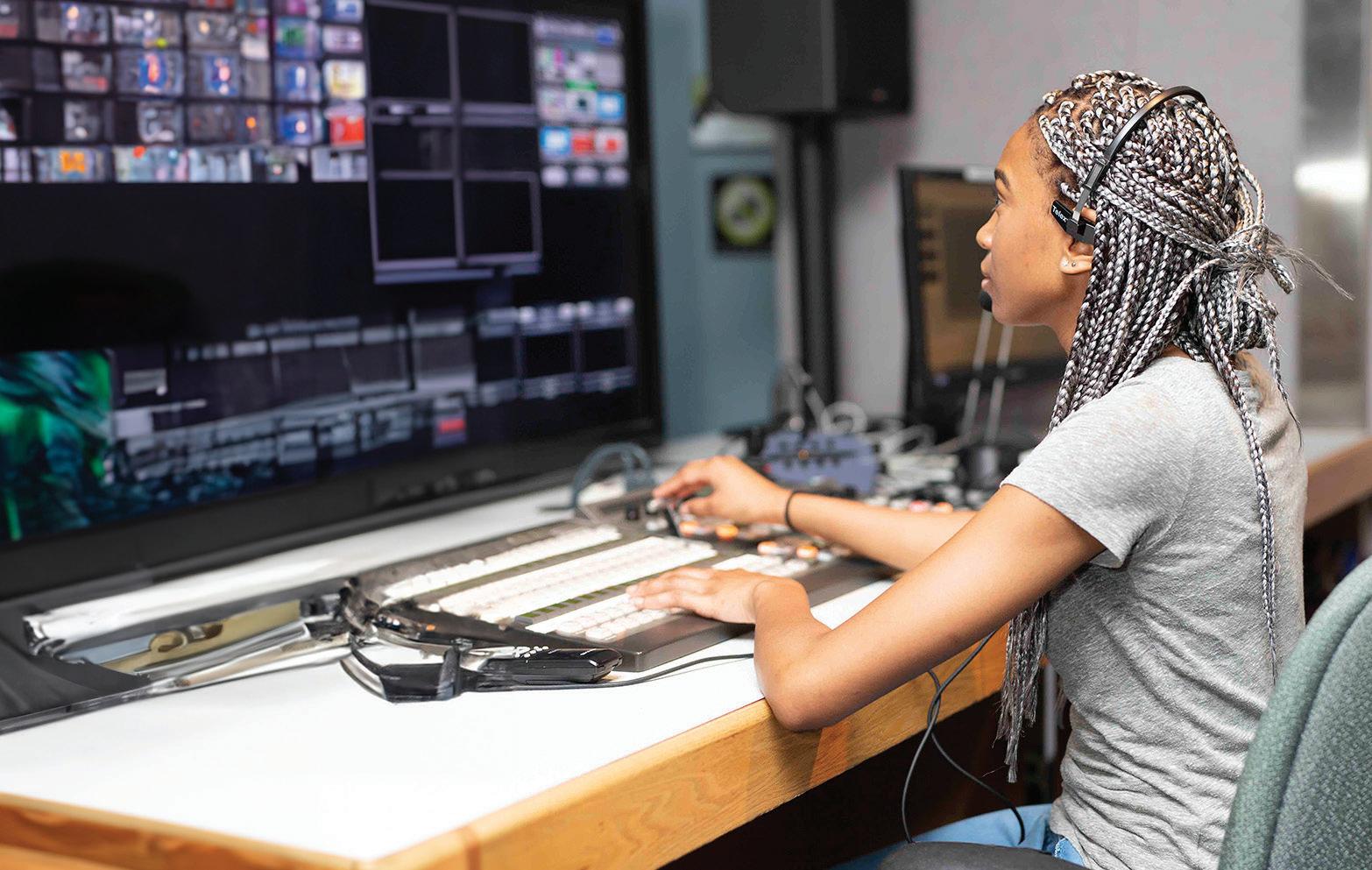




















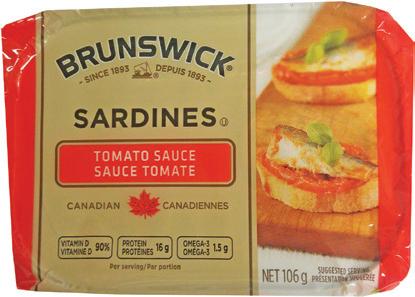
























































































SIMONE
simone@carib101.com TC

It all started in 1912 when a widowed mother of four started selling Shea Butter, African Black Soap and her homemade hair and skin preparations all over the countryside. At the age of 19, Sofi Tucker began her entrepreneurial experience, uncertain of what was to come, but with a determination that to this day is admired by anyone who knows of her legacy.
She became known as a healer who shared the power of shea and African Black Soap, and years later handed down her recipes to grandson Richelieu Dennis, who founded SheaMoisture and incorporated her wisdom into the brand’s hair and skin care innovations.
We now know SheaMoisture as a premier luxury hair and skin care line with a range of natural hair care products designed to tame curls, restore hydration levels, improve hair texture and leave hair looking and feeling healthy.
Some of their bestselling products include the SheaMoisture Coconut and Hibiscus to enhance curls, Raw Shea Butter to add essential moisture into dry and dehydrated hair, Jamaican Black Castor Oil to strengthen the hair and restore its natural state, and Superfruit Complex 10 to help restore color vibrancy and protect sensitized hair. Each of these products are infused with a blend of active botanicals and natural ingredients including shea butter, coconut oil, mango seed butter and silk proteins. It also has a range of bath and body products designed for soothing, hydrating, illuminating and energizing the skin.
In honor of Sofi Tucker (Grandmother of SheaMoisture) and in support of her entrepreneurial legacy, SheaMoisture Canada continues its dedicated support to help empower Black communities across Canada.
In 2021, SheaMoisture launched the Salon Relief Fund to help female business owners survive the challenging tides brought on by the COVID-19 pandemic. The pandemic exacerbated the significant wealth gap between black people and white people in Canada, a phenomenon not unique to Canada but observed in many other countries. The wealth gap is a result of historical and systemic factors that have contributed to
economic disparities among different racial and ethnic groups.
Canada, like many other countries, has a history of systemic racism, including policies and practices that have disadvantaged black communities. Discrimination in areas such as housing, employment, entrepreneurship and education, which has limited opportunities for wealth accumulation for black Canadians for generations. Unequal access to quality education has hindered economic mobility and limited career prospects for black Canadians, further exacerbating the wealth gap.
With an impressive $10,000 grant, generous salon gift baskets and educational workshops, SheaMoisture’s newest initiative Dream Fund is providing Black femaleowned businesses with the tools, workshops, financial aid, and visibility they need to thrive.

I had the opportunity to sit down and talk to Maureen Kitheka - Brand Lead for SheaMoisture. Speaking with her gave me some fantastic insight on the power of this initiative, and how impactful it has been even though it is only in its second year.
“We have existed for four years in Canada. What was clear was that despite the fact that America and Canada are different, our intentions remain the same; we want to serve the underserved community. One of our main questions was, how do we elevate our communities through wealth creation?
It is about building generational wealth. It is figuring out in our business model, how every sale we make will be invested into the community. This is how the brand is being launched into other markets.
When we talked to Black entrepreneurs, they provided insightful feedback that we were able to use to craft a program that was targeted to smaller businesses. In 2022, we launched the Dream Fund. There was a lot of research that was put into this initiative, and we said that if we are going to do it, we have to do it and talk about it, not just to build the brand, but for the community to know.
We want to expand the program, not just give them grants to walk away, but provide coaching for six months. One thing that was important to us was getting the community involved, and we did this by having them help pick the winners. We put together a panel of eight Black entrepreneurs and we had them help decide from our 300 hundred applicants.
I want to note that we are proud of the fact that last year we only had 60 applicants. We wanted to engage more entrepreneurs, so we put paid media behind it, we used social media, all because we wanted people to be aware. It was about getting the word out. We asked the community to vote
via social media. It was about having the community speak. The community owns this decision; they picked the winners.
The beautiful thing about entrepreneurship is resilience. When someone starts a business, it is their bread and butter. When we were picking our winners, we looked beyond what is obvious, and focused on what the businesses were thinking about the community. We did some investigation, research to see how community oriented they were.
Winners last year were asked to choose from a series of workshops; because they had to choose, we can’t tell how much value it added. What is clear to us this year is that it is not a monolith. There are different aspects of business that the entrepreneurs want to dive into, so we are going to tailor the winner’s packages to their needs.
Once we announce the winners, we celebrate them, learn their business needs and by September 15th, we can start their personalized sessions.”
I am happy to announce that we have the names of the winners:
IncluSV Beauty Solutions
IncluSV Beauty Solutions is a Black owned Beauty Supply and Natural Hair Services store located in Windsor, Ontario since August 2020. It is a one stop shop with a variety of products, stylists, and barbers.
Their mission is to provide a transformative experience for women, men, and children by empowering them to embrace natural hair styles. They are dedicated to breaking down barriers and normalizing natural hairstyles as professional choices. By celebrating the beauty of diverse hair textures and promoting inclusivity, they strive to redefine beauty standards and create a world where everyone can feel proud and empowered in their natural hair.
RÓUN Beauty
RÓUN Beauty is an early-stage bio-cleantech company that is creating Canada’s first plantbased braiding hair extensions for Black and afro textured-hair women.
Established in January 2023, RÓUN Beauty was born out of a frustration with the hidden costs of synthetic braiding hair, scalp irritation from exposure to harsh chemicals and plastic waste as these products end up in landfill after use.
Currently in the final stages of product development, RÓUN Beauty is on a mission to provide women with the gift they deserve; biodegradable and nontoxic hair extensions that help them look great, increase comfort and eliminate environmental harm.
There comes a time in every girl’s life when they inherit the responsibility of washing, detangling and styling their own hair. Without the correct education, tools and resources, this transition can be painful, and a hit to one’s self-esteem.
Hello Hair, a children’s consumer brand, is on a mission to rewrite the Black hair experience and support the next generation through visual representation, education and showcasing the importance of self-love through hair care and self-acceptance.
Gyallivant
Gyallivant’s mission is to provide innovative services, products, and events, and transformative spaces where Black women can play, explore, and embrace their wellness journeys through entertainment, recreation, and therapy in a holistic and culturally relevant way. They are dedicated to empowering Black women and offering them a comprehensive platform for growth and self-discovery. Their transformative spaces serve as safe havens, fostering mental, emotional, and physical well-being. With a blend of entertainment, recreation, and therapy, we strive to encourage holistic healing. Their community celebrates the diversity and richness of Black heritage, creating a space that thrives on positivity, empowerment, and personal transformation.
Arbre is a sustainable sun care brand on a mission to develop innovative and inclusive sun protection products. Their debut product, Spruce, is a tinted powder dry shampoo with SPF 20. It’s specifically formulated to provide optimal sun protection to the scalp without making your hair greasy. It contains reef-safe ingredients and comes in recyclable and sustainable packaging.
Their goal is to develop sunscreen products that will work for everybody, by creating a range of sun protection products. Arbre is also focused on raising awareness for the importance of wearing sunscreen in preventing skin cancer.
SHEAMOISTURE DREAM FUND
Photo Credit: Philip Harris (pharrisdesigns)

Winston Churchill said, “The only statistics you can trust are those you falsified yourself.” Unreliable statistics make it hard to know how many people die each year due to medication errors. How many more are taking harmful drug combinations or the wrong doses? The numbers are elusive because medical professionals don’t want to showcase errors and consumers may not realize their mistakes. Yet, errors happen many ways and at different points.
It’s like the telephone game where people take turns whispering a message into the ear of the next person in line. When the last person speaks the message
out loud, it has changed along the way. It’s a game that teaches how important details get altered when passed from person to person. The same is true as medication moves through production, packaging, labelling, dispensing, and use. It’s no game, and mistakes happen.
Doctors, nurses, and pharmacists are stretched thin. It used to be dangerous when handwritten notes in patient files were illegible. Now errors can occur from a typo. A shift change by nurses elevates risk. Some medical tragedies from mixed up medications are impossible to miss. Heart-breaking cases of infants administered the wrong medication are more common than you might imagine. So are situations where an elderly patient dies after being given the wrong drug or the wrong dose.
Accepting that “to err is human,” most hospitals, pharmacies, and care homes have layers upon layers of seemingly fool proof protocols, protections, and checks. Still, when people get tired, stretched, or sloppy, the best safety measures are not enough.

Consumers at home frequently call medication mistakes into poison control centres. What are the common crises? Husbands have taken their wives pills. People take their medication twice. Parents can’t tell how much medication they’ve succeeded in getting down the throat of a screaming child. Hundreds of thousands of these situations occur every year.

Labelling and dosage instructions can be confusing, and the print too small to read. Common abbreviations are among the causes of some errors. Micrograms (µg) can be mistaken for milligrams (mg) leading to an overdose. The Latin abbreviation for every day (Q.D.) can be confused with the short form for every other day (Q.O.D.)
It’s challenging enough when dealing with only one medication. When multiple medications are used it gets more complicated. How many readers engage in “polypharmacy”? It can refer to getting medications from more than one pharmacy or using more than one medication to treat a single problem. Most commonly, polypharmacy refers to the use of five or more medications at the same time.
This is not the time for complacency. You are not being rude by asking questions. You should ask for clarification until you understand completely. Take all your medications with you – or an accurate list of them with the doses you are using – to every visit with a healthcare practitioner. Use only one pharmacy. Communicate any effects of changes in medications. Dispose of old medication correctly.
If you or someone you know struggles to manage the timing and dosages of medications, reach out for assistance. A recent survey found that over two-thirds of low-income individuals taking medications daily are not taking them properly. They tend not to tell their doctor or they don’t have someone available to answer their questions. We can do better to help.
The safest way to avoid medication errors is comparatively easy. Do everything you can to avoid getting sick. It was Hippocrates, the Father of Medicine, who said, “The greatest medicine of all is teaching people how not to need it.”

“The greatest medicine of all is teaching people how not to need it.”
W. GIFFORD-JONES
MDCOMMON SENSE HEALTH DIANA GIFFORD-JONES




TRISHA SMITH
trishas@carib101.com
SAKRED SYNERGIIn our modern society, we are surrounded by a vast array of electronic devices that make our lives more convenient. However, along with the benefits of these technologies comes the concern of electromagnetic fields (EMF) and their potential impact on our health.
EMF is a form of energy emitted by electrical and electronic devices, and while they are generally considered safe at low levels, prolonged and excessive exposure to EMF pose more risks than we realize. This article will delve into the dangers of EMF, ways we are ex-posed to it, and finally tangible ways we can protect ourselves during this advanced age of technology that we’re living in.
Understanding the dangers of EMF
Electromagnetic fields are categorized into two main types: ionizing and nonionizing. Ioniz-ing EMF, such as X-rays and gamma rays, have enough energy to remove tightly bound electrons from atoms, potentially causing cellular damage and increasing the risk of cancer. However, non-ionizing EMF, which is produced by most electronic devices we encounter daily, is generally considered less harmful but still dangerous all the same.
Studies have shown that prolonged exposure to non-ionizing EMF from sources like cell phones, Wi-Fi routers, and power lines could lead to various health concerns. These include headaches, fatigue, sleep disturbances, and even potential long-term risks like increased cancer rates, hormonal disruptions and even reproductive issues.
This of course won’t happen overnight, but think about all the children who sit on their beds with chrome books on their laps? The toddlers we give our cell phones to, to watch YouTube while we drive, or the TV we set them down in front of everyday so we can cook dinner in peace. As the decades pass,
smarter this summer with a few healthier choices:
RACHEL
MARY RILEY
rachel@carib101.com

We all have events and occasions to look forward to and prepare for, however, summer will allow you to go above and beyond if you’re not mindful of eating habits. The habit of emotional eating can creep in so suddenly. What are the steps you and I should take to prevent obesity by the end of summer and the winter hol-

Steps to remain fit for the summer. Early morning workouts: I personally find that doing early morning workouts and being consistent helps you to be determined and have a disciplined lifestyle.
Get some extra vitamin D by taking your workouts outside. Instead of staying indoors on the treadmill or bike, move your cardio outside. Visit your local trails for a walk, run, or intervals. You can also switch up your cardio with something fun like kayaking, paddleboarding, or skating. There are plenty of fun options to get out into the fresh air (How to Stay Fit Over the Sum-
You are what you eat: Summertime usually means more parties with friends and family. You don’t need to skip the summer BBQ’s. Grilling is actually one of the healthier ways to prepare food. Grilling over high heat helps release fat from meat, making it significantly lower in calories compared to frying. When you grill your food, the fat melts and drips off instead of staying in a pan. Grill even
• Eating in moderation
• Add more veggies. Peppers, onions, and zucchini are all great choices to prep on the grill. Toss them in a bit of olive oil before putting on the grill.
• Stick with lean proteins like chicken breast, smoked turkey, or shrimp instead of higher fat pork and beef options.
Hydration: It is key for staying healthy over the summer. More than 40% of people who exercise are at least partially dehydrated during their workouts. The increased temperatures and activity can lead you to need more water than usual. The American College of Sports Medicine recommends active people have at least 16-20 ounces of water 1-2 hours before outdoor activity – meaning you need to drink up before you even start your workout to stay hydrated (How to Stay Fit Over the Summer, n.d.).
Listen to your body: If you begin to feel dizzy, nauseous, or tired, give yourself a break. Taking some time off for rest is better than overdoing your workout and getting sick or injured and having to stop working out altogether. If the summer heat proves to be too much of a challenge for your standard high-intensity workout, break it up into multiple smaller workouts throughout the day. This will allow your body time to rest and refuel without jeopardizing your fitness and workout goals (7 Tips for Staying for This Summer, n.d.).
Watch what you eat and when you eat it: Don’t workout on a full stomach, a light snack is all you need. After you workout, you want to eat a high protein meal because it will replenish your body and keep you full longer (7 Tips for Staying for This Summer, n.d.).

children are getting more and more exposed to EMFs at a younger age, increasing their chance of cancer and health problems as they get older.
You can’t escape the presence of EMFs in our everyday lives, but we can make a more con-scious effort to limit and/or neutralize our exposure to common sources like cell phones, lap-tops, Bluetooth devices like air pods, and electrical appliances like TV’s and microwaves.
Natural ways to protect against EMF
While it may be challenging to completely eliminate exposure to EMF, there are many natu-ral methods that can help minimize potential harm:
Reduce device usage
Limit the use of electronic devices, especially those emitting higher EMF levels like cell phones and Wi-Fi routers. Opt for wired connections when possible.
Create EMF-free zones
Designate certain areas in your home as EMF-free zones, such as bedrooms, where you can limit electronic devices.
Utilize airplane mode
Put your phone on airplane mode when not in use to reduce radiation emissions.
Use mixed metal jewellery
Wearing jewellery made from mixed
metals, like copper and silver, can help neutralize EMF radiation. Elite Shungite stone is also great to wear in the form of a necklace, earrings or bracelet, can act as a constant neutralizer of EMFs.
Himalayan salt lamps
Salt lamps release negative ions into the air, which can help counteract the effects of EMF radiation. A great location is under the computer desk, where your bottom half is exposed to the computer tower, router and wires.
Grounding techniques
Spending time in nature, such as walking barefoot on grass or soil, is believed to promote grounding, which helps balance the body’s electrical systems.
EMF is an ever-present aspect of our technologically advanced world, and while the majority of electronic devices emit non-ionizing EMF at levels deemed safe, prolonged exposure can still pose potential health risks. It is essential to stay informed and take precautionary measures to minimize unnecessary exposure.
Ultimately, as research on EMF continues, it is necessary to strike a balance between bene-fiting from modern technology and taking conscious steps to protect ourselves from potential health risks associated with excessive EMF exposure.
large trophy. He had just won the award for «best ribs,» reaffirming that I had made a splendid choice. The sight of the trophy stoked the flames of my excitement, setting my taste buds alight with anticipation.
Last weekend, I had the pleasure of embarking on a unique culinary adventure as I attended my first Halal Ribfest. This vibrant food festival, bursting with the aromas of diverse barbecued meats, provided an opportunity to savor meals that surpassed my gastronomic experiences so far.

Walking amidst a colorful assortment of around six or seven food stalls, one specific vendor caught my eye. Adorned with the Jamaican flag, the stand belonged to Brickyard BBQ and Bar, a hidden gem that I was thrilled to discover. The fact that this was a Black-owned enterprise, with a restaurant located in Etobicoke, filled me with joy. There’s something exceptionally gratifying about finding and supporting Black chefs and their businesses.

Glancing at the menu, I was drawn to the enticing array of offerings. BBQ and jerk chicken, jerk beef ribs –the options were too tempting to resist. Taking the plunge, I decided to indulge my senses in a feast. I ordered a plate packed with a beef rib, half a jerk chicken, two pounds of pulled beef, and three sides: rice and peas, coleslaw, and cornbread.
The anticipation amplified as I stood in line, waiting for my order. The chef emerged, proudly holding aloft a
When the meal was finally served, it exceeded all my expectations. The jerk chicken was moist and delicious, brimming with well-balanced flavors. The beef rib was a taste revelation; its savory layers spoke volumes about the days of careful marinating it had undergone. The sweet sauce lent a delightful sweetness that perfectly balanced the smoky notes of the meat. As for the sides, they complemented the meat dishes wonderfully, each contributing its unique flavor to the symphony of tastes.
The experience I had at the Ribfest, particularly the culinary delights offered by Brickyard BBQ and Bar, left an indelible mark on my taste buds. It’s unclear if this was their maiden venture into the competition, but I genuinely hope it wasn’t their last. Their incredible flavors and culinary talent unquestionably deserve repeated recognition.
For anyone with an inclination towards BBQ and an appreciation for authentic flavors, a visit to Brickyard BBQ and Bar is an absolute must. Located at 120 North Queen Street in Etobicoke, this place is a haven for food lovers. With each bite, you taste not just the food but the passion and culinary skills that go into creating it. A visit here promises more than just a meal; it offers a memorable food journey that will leave you eagerly anticipating your next culinary adventure.

On July 13th, 2023, 25-year-old Carlee Russell, a nursing student, disappeared after calling 911 to report seeing a toddler walking barefoot along the Alabama interstate. Police say they did not receive a call about a missing

toddler at the intersection. However, when they arrived at the scene, all that was there was her car and personal items. Upon learning of her disappearance, many news outlets covered the story providing updates on where the case was at. Two days later, Russell returned home safe and sound. She said two men abducted her. During the abduction, Russell said she was kept in a tractor-trailer and escaped before being re-captured. After being re-captured, Russell said she was placed in a car and forced to undress before being blindfolded and photographed. She managed to escape this time around and return home to her family.
Shortly after her return, local police and investigators stated most of Russell’s sto-
ry was inadequate, and the continuing investigation provided more doubts. Police found that Russell had done searches on paying for an Amber Alert, how to steal money from a cash register without getting caught, and the movie, Taken.

When news of her disappearance broke, many people prayed for her to return to her family safely. To find out it was all a lie left a bad taste in the mouths of those who worried for her safety. The case received a lot of media attention. That doesn’t happen too often when Black people go missing. In fact, thousands of Black people are still missing, and their cases have yet to receive a resolution.
These missing people have families
and friends who care about them and will do anything to have their loved one return home. False stories are very insulting to actual victims of abductions and their families. The trauma of forcefully being taken away is something one can never forget. Not only that but victims can often be subjected to other traumatizing acts while their families worry about whether they will come home or not.
While Russell’s parents and boyfriend have shown they are on her side, many have held her accountable for her wrongs. Claiming to be a victim of crime isn’t anything to make light of when there are real victims out there.
BLK Frames Vol.II came to fruition, an art show created by Sam Tita, founder of Black Men’s Style, to highlight the hearts and minds of Black men. As the name suggests, part II continued from a successful event by the same name in 2022. This year BFV2 (Black Frames Vol.II) was held at Withrow Commons, located at the Toronto Exhibition Place, across from the Princess Margaret Fountain, a venue with the perfect setting to host the art of the evening. A group of Black men were highlighted, and we were given insight into which they were through their lens, reflected in brush strokes, fine pencil lines and artistic technique.
In the typical fashion of BLK Men’s Style (Black Men’s Style), together in the shared interest of the love of art, curios
their efforts and talents. In an awe-inspiring demonstration, these pieces, although carefully curated, were finished in just a few short hours displaying intense focus, skill and passion for their chosen craft.
The portraits displayed are a look into the hearts and minds of Black men, and as such Black women were the focal point of most pieces that decorated the walls. Their pain, happiness, pleasure and beauty were poured into pictures through the mixture of depth and colours. Circling the room, it was easy to become entranced by the simplicity yet intricacy of the pieces in the exhibit; the talent blew away those who dabble in artistry and newcomers to this side of the emotional psyche. Every piece conceived new thoughts that left you glued to the floor, trying to sift through your mind to understand how you feel about the work and, two, what was the motivation behind this beautiful display?
Attending this event caused a revelation that we are not so divided in common goals and desires. Black women inspire Black men to become their best selves. Although different, the core elements and emotions of
many pieces all came back to the love of the Black woman in all of their roles and stages of life, showing that they are beautiful no matter what. You realize that the world does not accurately depict what we think of one another. Still, deep love and admiration cause talent and creativity to bloom in the most beautiful fashions.
BFV2 showcased what BLK Men’s Style is all about, the depiction of Black men in their most authentic essence. Their talent, creativity, focus and vulnerability are laid out on the table for the world to see, and it is a beautiful display. You left the venue feeling renewed in your thoughts of what Black men can create when intention and purpose are apparent in the mind’s eye. Witnessing the depth of a Black man’s thoughts is a refreshing change from the stereotype that they do not voice their feelings, but this event showcased everything inside them and much more. We can now take a different approach to some of our preconceptions, and one of the most important ones is that Black men intimately love Black women with everything in them,
and we do not have to be as divided as we have been up until now. BLK Frames Vo.2, in all its beauty, served to bridge the gap to men’s intimate feelings and reveal their thoughts in a way we do not often witness.
The list of contributing artists who made BFV2 a success.
• Jesus Bondo Lance Freeman
• Shane Stephens
• Josh Hyman
• Phillip Saunders
• Kwame Delfish
• Hans Poppe
• Blicser Elliot
• Adrian Hayles
• Aliuomoakin
Returning artists From Vol I
• Joseph Cain
• Wayne Moore
wanted to run away from the situation, but not I. You see I have worked with drug addicts for years, spending my evenings communicating, getting to know ladies and men of the night, addicts and homeless too in: the Bronx (NY), Washington DC, Toronto and Philly. I walked over and put my wife through a half hour of stress, talking to them, finding out where they received assistance and were there other places they could go instead of this localized area. They gathered around free injection sites, as well as certain groceries and restaurants that hand out free food when closing.
I spoke to several local police, all concerned about the number of drug related deaths they had been seeing since summer came upon them. Expressions like “There is no end to this mess,” and “The higher ups know not what they do,” showed me the terrible state our police and medical emergency folk were going through. Fatalism everywhere, with no ends in sight. Vaccination sites act like magnets to both users and drug pushers as well. Where you can find addicts, you will find an opportunity for sales and acquiring drugs and paraphernalia too.
will attract addicts to their region. When the Toronto City Council and Federal Government (they pay for free services) offer free drug runways (injection clinics) they attract those who are already on the down and out, and yet these same medical-security professionals cannot force the addict into a program that would make them clean once again. Bad, but well meaning programs feed addictions, but do not solve the problem. Statistics Canada has shown that 61% of homeless do use illicit drugs at least once during the period of homelessness, and with the opioid Fentanyl pandemic all you need is to use a pill once to die. When someone takes illicit drugs they are not of proper sound mind, especially if they know these drugs are harmful, or even lethal. What do we do with people who will harm themselves? Well we call the police, or officials to take them to the hospital right? So instead of feeding an addict’s hunger for drugs, why not force them to rehab? They cannot hurt themselves or others while they are in someone’s care right?
them to leave. Thankfully they did. Their weapon of choice was a knife. I took control, knowing all they needed was a few dollars to continue their high.
Toronto will certainly become like Vancouver and many urban centres in America soon enough. A hard line is needed here. When you deal with a stupid person, you can expect stupid things to be done. Addicts act in a similar manner, needing to be managed with their health in mind. Addiction is a mental disease, so treat it with determination, forceful passion. Don’t ask the addict, tell them what is going to happen, how they will be medically treated, and accomplish the task. A mentally deranged person loses their freedom for a time until they become well.
corrugated boxes, filled at night with people you would not want to meet. Is it true is it not? Middle class citizens want to stay away from such people, keep them outside of their communities, don’t want to see, hear or speak to them right? The: dirty unwashed, diseased and forever walking about in a drugged state.
My wife and I came upon them while strolling about, and my better half
The local government simply does not know what to do, meaning well they enact services that seem to be enabling addicts. Drug users then get high, and walk about the local area in a dangerous uncontrolled state. Discarded syringes are a threat to local children and animals strolling through their parks and community streets.
Toronto is becoming just like Vancouver. The well-meaning, but ill-advised politicians’ programs and services have and
• New York City Crimes: 38+% have some relation to drugs and addiction
• Vancouver City Crimes: 28-36+% drug related
• Toronto City Crimes: They do not provide such information to the public at this time
I was mugged twice while living in New York City, each time by an addict. I recognized the calls, gave the twenty dollars I kept in my pocket for just such an incident and told
Also, forced homelessness is a crime. Bringing people from across the globe to reside in Canada, and not providing them a place to stay makes no sense. The very services needed for those who have left their homes because of: abuse, addiction or unemployment should be expanded. Our local governments squander revenue on programs while the needy have no place to go except the streets.
Middle class citizens have the ability to force governments to manage your taxes better, directing these funds to where they should go. The medical sector has made work programs (like injection sites) that waste your funds and put your family at risk as well. Hard decisions need to be made in Vancouver and Toronto. Once the horde has control, it will be very difficult to regain control of your funds and freedom as well.
simone@carib101.com
 HUMAN SPECIALIST
HUMAN SPECIALIST
“I have gone through a lot the last few months, and my life feels like it is in a tailspin. At times I don’t know if I am coming or going. There is just so much to talk about, I really don’t know where to begin…”
I looked up from my hands at the woman sitting across from me. She seemed uncomfortable, but I wasn’t sure if I was projecting. Now that I was sitting in front of someone who could actually help me, I wasn’t sure what I was going to say.
“Why don’t you start from the beginning Simone? What are you thinking about at this moment?”
In my head I was like, if this woman really knew what I was thinking, she
would probably tell me to get out of her office. How do you tell someone who is there to help you that you don’t think they can help you? That you think that because they have not gone through what you have that they can’t relate to your pain. How about the fact that because she is an older Caucasian woman, she has no idea about the Black experience? I couldn’t say all of that so instead I said,
“I feel uncomfortable. It is hard to speak about what I have been through. I really am unsure of where to begin.”
"What brings you here today?"
“Well, I believe that I am suffering from depression. I sleep all the time, I don’t feel very confident in myself, or my decisions. I am making choices that are clearly not helping me move forward in my life. I just don’t know what I am doing.”
"Is there anything specific you'd like to focus on or work through during our sessions?"
“I think that one thing that I would like to focus on is making better decisions when it comes to my personal relationships. I have unresolved trauma,
grief, anxiety, and this has significantly impacted my emotional well-being. These emotions have spilled over into other areas of my life, and it has affected my relationships, work performance, and as I noted, my decision-making abilities.
I feel drained all the time. Activities that I once found enjoyable have lost their appeal, and I feel disengaged. I feel inadequate, and I know that I have low self-esteem, which has shattered my confidence. I find it challenging to concentrate and perform well at work. I am finding it difficult to meet deadlines and achieve my personal goals. I am not making clear and rational choices, because I know that I am emotionally overwhelmed, and distracted by the ridiculous problems that I cause for myself.”
I felt the tears running down my face and I couldn’t stop them. I didn’t realize how much I had been holding inside. I was also surprised that I was able to articulate them so well to a stranger. It was overwhelming, which explained the tears.
“That is a lot to unpack Simone,” she responded. She leaned behind her
desmond@carib101.com


It is entirely logical that the peoples of the Caribbean and of West Africa would be better swimmers than Europeans. The Tainos and Kalinago of the Caribbean as well as the peoples of the West African coast depended on the sea for a large percentage of their sustenance.
Consequently, as people who spent a significant amount of time on the ocean, or on large rivers in dugout canoes they had to, of necessity, become adept swimmers, since those vessels are more likely to capsize than large ships.
Additionally, the Native Americans of the Riverain areas of northern South America, and the peoples of the islands of the Caribbean traditionally began teaching their children to swim as soon as they could creep efficiently. It is very likely that the peoples of West Africa followed a similar practice. On the other hand, Europeans, who used much larger vessels did not face the same risk and therefore did not feel the same need to become proficient swimmers.
Living in a part of the world where the water was always warm enough for swimming, Native Americans and West Africans had the opportunity to hone their swimming skills to a much higher level than Europeans who lived in an environment where swimming was only possible six months of the year. So, it should come as no surprise that first the Spaniards, then the English forced captured, or kidnapped: Native Americans and Africans to dive for pearls in Margar-
ita (Margarita, Coche, Cubagua), Panama and The Bahamas because they recognized that the enslaved peoples’ swimming abilities were superior to their own.
The Lucayans were the first indigenous Americans encountered by Christopher Columbus. When the Spaniards arrived in the Bahamas archipelago, they quickly subjugated the peaceful Lucayan people. When pearl fisheries were discovered, and having observed that the Lucayans were very skilled at diving, the Spaniards began using them as pearl divers in a de facto slave system literally working many of them to death.
The Guaiquerí/Waikeri of the Margarita islands (Margarita, Coche, Cubagua) had initially welcomed the Spaniards as they provided valuable protection against Kalinago attacks. However, they met the same fate as their Lucayan cousins of the Bahamas when the Spaniards discovered the pearl beds there. When the pearl fisheries of the Bahamas
and handed me a tissue box. “It sounds like you are very hard on yourself.”
“I am hard on myself. I take full responsibility for everything that has happened to me. I have made some really stupid mistakes, and they have cost me everything. Now here I am sitting in front of you without two nickels to rub together, a messed-up relationship, I don’t even have my own space, all because of my stupidity.”
She sat there without saying a word. I looked back down at my hands. I felt vulnerable and raw. Had I said too much to this woman? This was the point right? When I looked back up, she was still looking at me, so now I just felt uncomfortable. Finally after what seemed like forever, she spoke,
“You seem to be very hard on yourself Simone. I think that in our next session I want to start there. Let’s book you back in for two Mondays from now.”
Like that, my first therapy session was done. I was not sure how I felt about it.
were exhausted, the Spaniards in 1508 began kidnapping and trafficking large numbers of Lucayans to Cubagua where they were enslaved and forced to dive for pearls.
The Spaniards ruthlessly drove the Guaiquerí divers to the extent that their health suffered and this physical exertion in combination with the newly introduced diseases led to a rapid decline in their numbers. To supplement the available labour supply on the Margarita islands, the Spaniards conducted slaving raids on Trinidad and the Venezuelan coast leading to several violent clashes with the native peoples. Bartolome de las Casas, who spent time in the pearl fisheries in the early sixteenth century decried the working conditions of the divers and explained that there was “No life as infernal or desperate” than that of the pearl divers.
My first therapy session was done, and I was not sure how I felt about it!
To begin you will of course need some dried cannabis flowers. Cured cannabis is ideal but not completely necessary. Of note here is that not only bud can be used to make infused products. If you’ve just finished trimming your plants after harvest, what would end up as waste can be reclaimed in this process. Any tiny buds and “sugar leaf” (small leaves close to the buds covered in THC crystals) are not worth smoking but valuable for infusing. Obviously, they will not produce an end result as tasty or potent as using actual bud but are still very effective.
with approximately 60mg of THC.

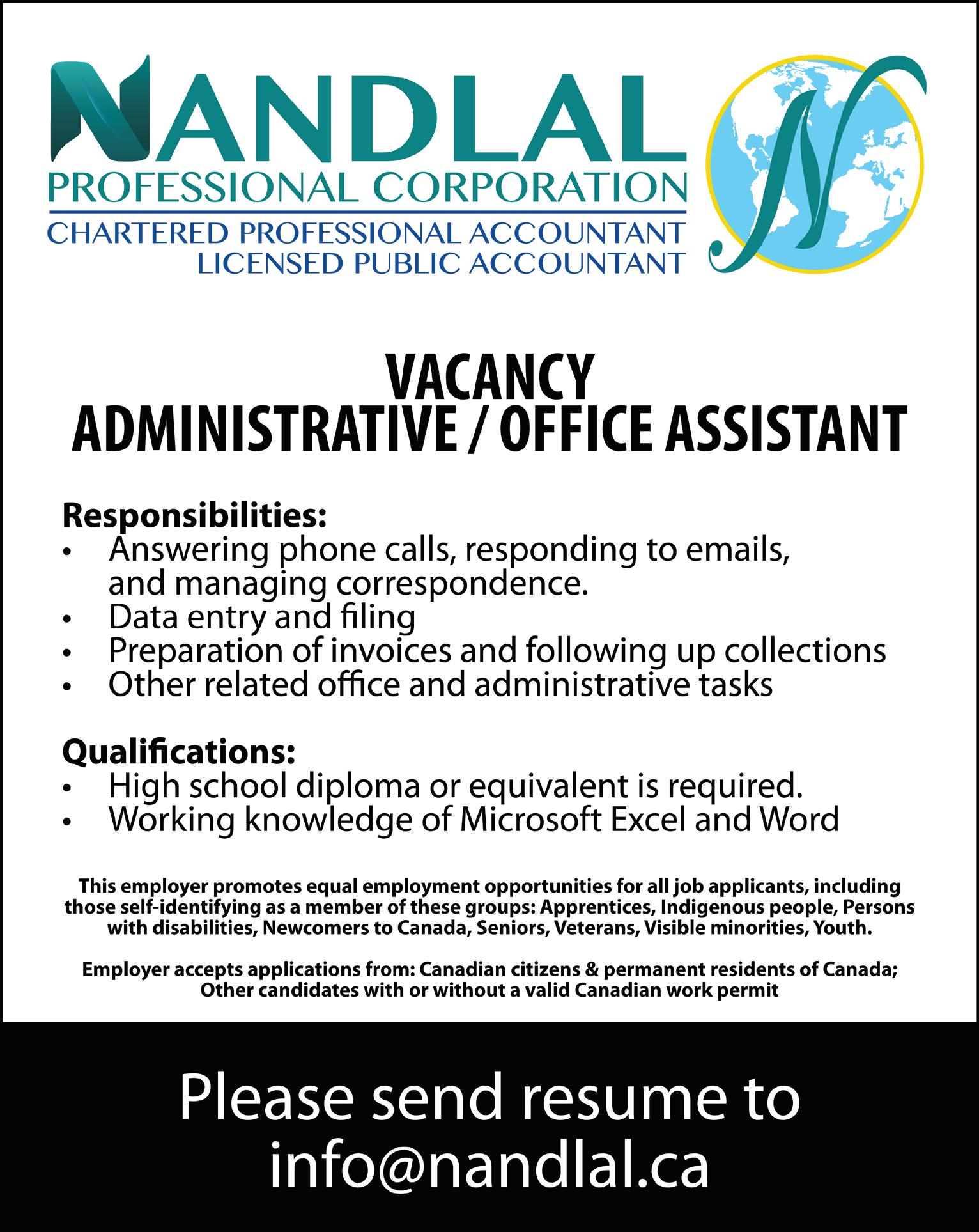
destroy all the THC in your cannabis!
lars that you would end up spending in overpriced licensed dispensaries. All you’ll need is some simple materials and a reliable heat source and you’re on your way!

The amount of cannabis to use for your home infusion is up to you. Without lab testing, it’s impossible to know the exact potency of your infusion but a simple calculation can at least give you a ballpark figure. Once you have determined the THC percentage of the strain you are using (which is relatively easy to look up), you can use this info to calculate the strength of what you’re making. Every percent is equal to 1 mg of THC per 1g of dried flower. So, if you used 3g of flower that had a THC content of 20%, your infusion would end up
Your next choice is what type of medium you will be using to infuse with your cannabis. THC molecules will bond to any type of fat molecule. Butters and oils are your best option. Coconut oil has the highest fat content of all oils and is versatile enough for baking and cooking. Keeping track of how much oil or butter you’re using is necessary to derive a dosage per serving. Once you’ve figured out the size and number of servings you want, the THC is divided evenly amongst them. Please be aware that the most THC you will infuse using the simple methods will be about 6070% of the original amount, so there will be some drop off in potency.

The following step is perhaps the most critical in this process. In order to give your infusion, the affects you wish it to have, your cannabis must have its THC activated. This process is called decarboxylation or “decarb” for short. The best way to do this is by putting all the cannabis you wish to use on a flat tray in an oven at 110 degrees C (230 degrees F) for 20-30 mins. Be careful because overdoing this step can
Now that your cannabis is ready to infuse your chosen medium, you will create a small pouch using cheesecloth. Place your lightly broken up cannabis inside and tie it off tightly. If you wish to remove some of the grassy taste and colour from your cannabis before infusing, you may blanch it by placing it in boiling water for 1-2 mins and then quickly placing it into an ice bath. Most of the chlorophyll, which is the cause for this taste and colour should be leached out while retaining its THC.
Place your oil or butter into a pot with twice the amount of water and bring it to low to medium simmer. Place your cannabis pouch into the liquid and allow it simmer for 3-4 hours. Once complete, remove the pot from the heat and place it in the fridge to cool after taking out the cannabis pouch. Once cool, your medium will have hardened and separated from the water. Simply scrape any residue from the underside and your homemade Infusion is ready to use! Remember your dosages and consume responsibly!

Are you thinking about moving into a private seniors’ residence? If so, you’ll need to sell your current home. Here are three things to consider to help you make this significant transition as easy as possible.

1. First, find the perfect residence. Of course, the facility must meet your needs and budget. However, you must also like the atmosphere. Don’t hesitate to hire a housing consultant to help you find properties and set up tours. Once you’ve secured the perfect residence, your motivation to sell your current home will increase tenfold.
2. Secondly, the process of selling a property can be quite stressful, especially if it’s been decades since you last moved. Enlist the help of family and friends to sort through your possessions.
3. Finally, the most important thing is to work with a real estate agent you trust. They’ll guide you through every step and help take the weight off your shoulders.
Get ready to step into your new life with the support of those around you and a trusted real estate specialist.
Are you often on the road for work? Do you have a busy schedule? If you’re looking for a property that matches your stimulating career and busy lifestyle, a new-build condo could be the perfect fit. Discover the benefits.
Convenient location
Condos are often conveniently located near major highways and public transit routes. If you regularly commute, having these options within reach makes sense.
Amenities
New developments often offer spacious common areas and convenient amenities like heated underground parking, a gym, a swimming pool and electric vehicle charging stations. Does
your hectic work life leave you no time to take care of a yard or go to your local fitness facility? Condo living could be the answer.
Wise investment
If you buy a newly built condo, you won’t have to worry about renovating it for several years. This can help you budget and save time managing upgrades. Plus, you can rest easy knowing the building and common areas will be well maintained. Finally, since real estate is a safe investment, you can eventually resell your property at a profit.
Contact a real estate agent to find a condo that will allow you to devote yourself fully to your career.
Today, becoming a homeowner can be difficult. However, with the right preparation and discipline, you may be able to realize your dream of owning a home more easily than you think. Here are three tips on how to financially prepare to become a homeowner.
1. Focus on paying off debt
When you borrow money to buy a home, lenders will evaluate your credit history and financial situation to ensure you can meet your mortgage obligations. For example, you can boost your credit score by paying off your debt as quickly as possible. It’s much easier to get a mortgage once you no longer owe creditors money.
2. Create a detailed and realistic budget
Although sticking to a budget can feel a bit tedious, it prevents you from making blind decisions you may later regret. A well-thought-out budget must account for several expenses, like your mortgage, municipal and school taxes,

electricity bills and home maintenance expenses.
You must also consider the costs associated with purchasing a property, such as moving expenses and title transfer fees. If your budget is in the black, go ahead and make your home purchase.
3. Improve your spending habits
You may be consciously or unconsciously overspending instead of putting money away for a down payment. Implementing healthy financial habits and trimming unnecessary spending could help you save more money. Use credit as a last resort and look for opportunities to save on essentials.
Do you need help managing your debt or saving for a down payment? Consult a professional, like a licensed insolvency trustee, financial advisor or accountant and follow their recommendations.
and
It is becoming difficult for first-time buyers to own a home, especially when paying high rent. Many families are living on the edge with the high cost of living, so families are buying homes together. On average, a three-bedroom apartment today cost $3,000 monthly to rent. Two tenants can come together and buy a home instead of paying rent, and that will make them co-owners. Co-ownership can be rewarding but be cautious since it is a significant undertaking when sharing a home and a mortgage.
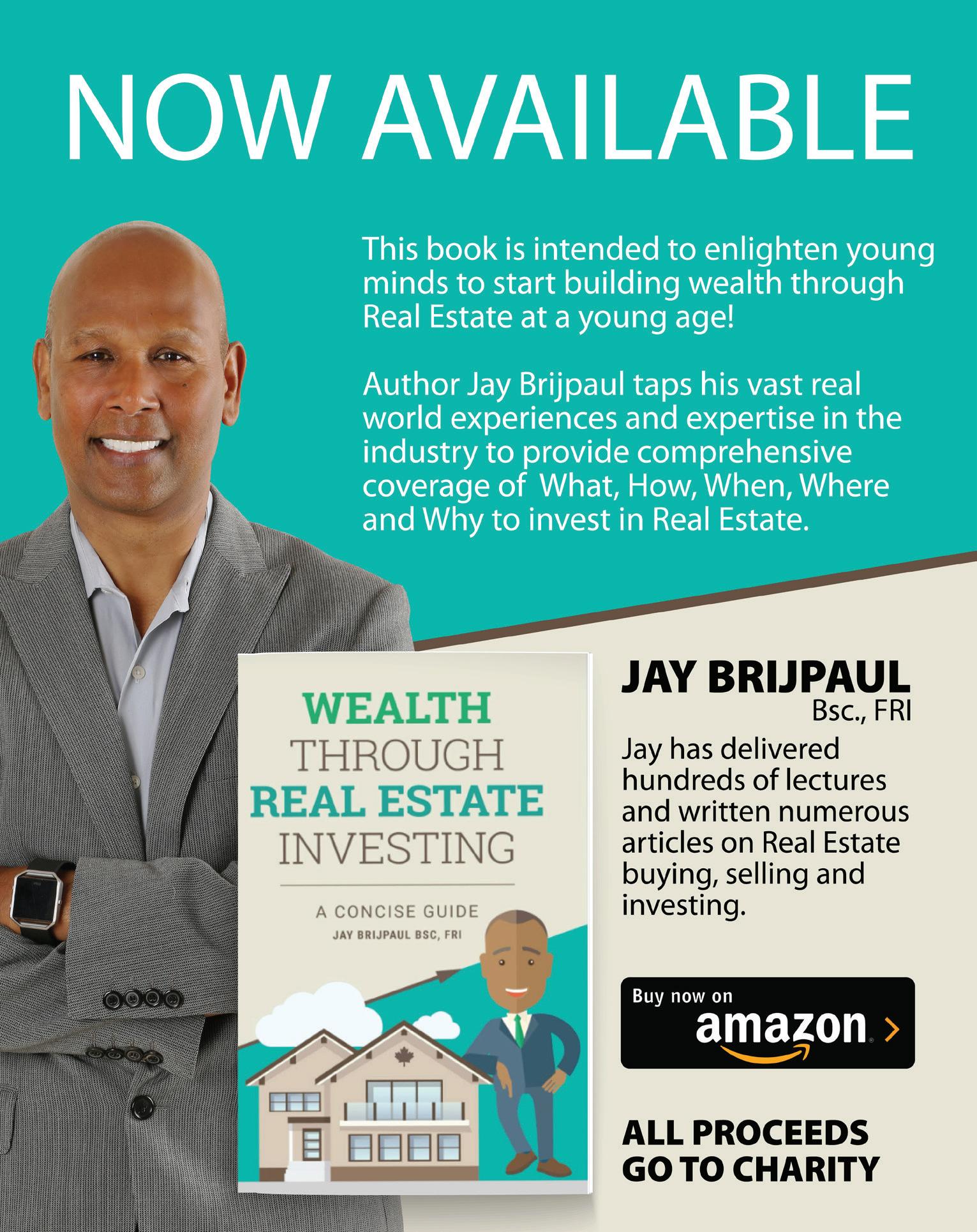
There are many advantages of co-ownership. Families can buy a home because they can qualify easier for a mortgage. They can negotiate a lower interest rate because of their combined financial strength. Another advantage is that the coowners can put a more significant downpayment on the purchase. They can share costs such as repairs, maintenance, improvements, and utilities. Later, the families can use some of the equity to buy another home and reconcile with each other.
There are a few things that we can improve with co-ownership. If one of the co-owners has large debts, poor credit, or a low-paying job, it can affect qualifying for a mortgage. Another problem is that the other owners must carry the shortfall if one party cannot keep up with their share of the financial responsibilities. The next snag is the arrangement to share the home and

the duties such as snow removal, grass cutting, and any other maintenance the home may need.


Co-ownership works when all partners carry their weight. Co-ownership is popular among communities where a family will buy a home together. In most cases, siblings will take on an extra job and use the income to pay down their mortgage. At that point, they will buy a second home, and this trend will continue until all the family members own their own home. Co-ownership works best when two partners buy a house together since, with more partners, there is potential for more problems. Each partner should contribute financially towards the downpayment and closing costs. Before buying, the partners should discuss how they will share the accommodation and the cost.
Co-ownership is like a marriage with a prenuptial agreement. The parties must have an exit strategy before buying a home with a partner. What happens if one partner dies? The partners can choose to take title to the property as joint tenants or tenants in common. As joint tenants, if one partner dies, the entire property belongs to the other partner. Joint tenancy is popular among married couples or when a partner wants to give the partner’s portion to the other. Most co-ownership arrangements are made as tenants in common where upon death, their portion of the property’s value goes to their estate and not the surviving partner. Unlike joint tenancy, where all the partners have equal ownership, the tenant in common gives a certain percentage of homeownership according to how much each partner invests in the property.
Use a real estate lawyer to draft a co-ownership agreement. Co-owners can have a cohabitant agreement and an independent property agreement. The cohabi-
tant agreement addresses how they will share the property. It describes in detail how the occupant will use the home. When drafting a co-ownership agreement, consider it a rental property where, for example, one may live in the basement while the other is on the upper floor and divides the rental and utility cost accordingly. The cooccupant can open a joint account and pay their share of the monthly instalment. You can use the money from the joint account to pay for the mortgage and other expenses. It is smart to keep three months of reserve cash in the joint account. The property agreement can address the choice of taking the title, the distribution of shares, and what to do if one owner wants to end the deal. In addition, a property agreement must address what to do if one party cannot live up to their financial responsibility
and how to handle any disagreement.
A great relationship is the hallmark of a flourishing co-ownership. When the connection is strong, parties do not look upon each other to get the job done. Choose a partner with equal strengths and someone you can trust. If any partners are married, it’s essential to know whether the relationship with their spouse is solid or rocky. If it is rocky, it can affect your partner and ultimately you. Disagreements will happen, but how we resolve the problem is ingenious.
The benefits of co-ownership outweigh the risks. If you add up the amount of rent money you can save, the equity you can build, and the amount of money you can save with shared expenses, co-ownership is a smart choice.
Co-ownership is becoming trendy

Is trying to find things in your garage starting to feel like you’re doing an obstacle course or treasure hunt? Here are a few tips to make the most of this practical storage space and feel proud to show it off to your visitors.
1. Sort your belongings
Group your belongings into sub-categories, like tools, gardening equipment, games and toys, sports equipment, bicycles and car care products. Next, determine if any items are broken, expired, useless or duplicated. Keep only what you need. Decluttering will give you the motivation to reorganize the space and improve its functionality.
2. Dust and clean
Are your garage floors covered in dirt and grime? Are the walls littered with cobwebs and paint splatter from your latest DIY project? Roll up your sleeves and clean the space from top to bottom. If necessary, apply one or two coats of paint to the walls to freshen up the space.
3. Invest in storage solutions
Shelves, clear plastic totes, metal cupboards, perforated panels and hanging platforms are just some of the furniture and accessories you can use to optimize storage in your garage. Keep the items you use most often within easy reach and lessused items safely stowed away. For safety reasons, leave the floor clear and make the most of the wall and ceiling space.
Visit your local home renovation and hardware stores to find everything you need to outfit your garage like a pro.
Wood is used in a wide variety of ways in the furniture, construction and renovation industries. Increased demand for eco-friendly building materials has led to the development of numerous non-toxic processes to treat this versatile organic material, including acetylation.
Process
Acetylation is an environmentally friendly process that protects wood and makes it more durable. It involves treating wood planks with a non-toxic substance with a similar chemical composition to vinegar that prevents moisture from seeping into the wood cells. The result? Boards treated with acetylation become very firm and stable while retaining their original appearance. They’re rot-resistant and easy to maintain, and they don’t attract wood-eating insects like termites.
Applications
Acetylated wood is suitable for many uses. It’s not prone to swelling and shrinking, so it’s ideal for outdoor structures like decks and humid spaces like bathrooms. It can also be

used for door or window frames, floors and countertops.
Are you thinking about renovating your home? If you want to reduce your ecological footprint without compromising on quality, think acetylated wood.
As the days grow colder, it’s time to face the facts: Summer is coming to an end! A change of season means a change of wardrobe. Follow these simple tips to avoid stuffing your drawers, wardrobe and closets with clothes you won’t wear for several months.
Start by gathering all your summer clothes, including shorts, camisoles, light dresses and capri pants. Lay them on a flat surface, and then sort through them. Sell or give away the clothing you no longer wear to friends and family or donate them to an organization.

Have you chosen which clothes you plan to wear again next year? That’s great! Make sure to wash dirty items to prevent them from developing a musty smell over winter.
Remember to give your clothes room to breathe while in storage. In other words, vacuum-packing them in plastic covers or compacting them in cardboard boxes isn’t ideal. Instead, use linen or cotton bags or non-hermetic storage bins. Don’t use thin wire hangers to hang your blouses or shirts, as they can cause stretching. You should also avoid storing your
clothes in a damp location like your basement. Finally, use natural solutions like lavender, camphor, cloves and rosemary to keep moths away.

Fill in the grid so that every row, every column, and every 3x3 box contains the numbers 1 through 9 only once.
Each 3x3 box is outlined with a darker line. You already have a few numbers to get you started. Remember: You must not repeat the numbers 1 through 9 in the same line, column, or 3x3 box.
The luckiest signs this week: PISCES, ARIES AND TAURUS
ARIES
You’ll organize an event that will bring many people together. The full moon will make you more charming, and you’ll be quite charismatic with those around you. In love, you must take a step back to get closer.
TAURUS
You’ll be promoted after a colleague quits. The holidays will allow you to let go and define your plans more precisely. Friends will invite you to go on a nice getaway or rejuvenating trip.
GEMINI
You’ll be interested in participating in the activities in your community or municipality. You’ll take on one project after another. Even if you’re shy and reserved, you’ll follow through on your ideas. Nothing can stop you!
CANCER
Be patient, and you’ll realize your dreams; good things take time. Rome wasn’t built in a day! Collaboration is a great tool for developing your ambitions and goals. Sometimes you must start fresh and rebuild.
LEO
Professionally or personally, you must be patient to reach an agreement. Stop being stubborn with the same people. You’ll win your case if you have to settle something in court.
VIRGO
If you’re struggling with a health problem, you’ll finally get the treatment you need. You could suddenly move up the corporate ladder at work. Your significant other will make a serious commitment to you.

LIBRA
You’ll achieve something great that fills you with pride. You could save someone, if only by listening to them. They’ll offer you their gratitude. At work, you may be given significant responsibilities that are a burden
SCORPIO
Make time for family, especially your children or elderly parents. You’ll give them all your time and devote yourself to them. If you’re in a relationship, it’s important to express how you feel through words.
SAGITTARIUS
You could go back to school, or at least take a training course to benefit your career. Even though you’re short on time and must work hard, you’ll accomplish a remarkable feat.
CAPRICORN
At work, you’ll likely have to put in some extra hours. However, you’ll be generously rewarded. This extra effort will boost your salary and improve your working conditions. In love, you’ll be showered with affection.
AQUARIUS
Just as you’re making a fresh professional start, you’ll discover a more promising position. The salary will be attractive, and you’ll finally be able to save money. Above all, you’ll no longer have to pinch pennies.
You’re intuitive and imaginative. You’ll define your priorities and visualize a future that suits you. You’ll have the enlightenment to guide you along this new path.
LAND FOR SALE IN TOBAGO:
10500 Square feet near Mount Irving Golf course. Approve by Town and Country Edward 647218-1333.
ART FOR SALE: Want your children to improve in learning. Buy a motivational specifically made art piece at a reasonable price. Also art made with your favorite 4 colors. Call Kelvin 647-858-4660.
LAND FOR SALE IN TRINIDAD:
Land for sale in Chaguanas
Orchard Gardens approx 5,000 Square feet. End lot $250K CDNWhatsApp # 647-848-3931
FOR SALE: Homes for saleLange Park, Chaguanas, Trinidad - 3 bedroom, 2 bathroom, fully a/c 400k CAD. 437-929-6750
WANTED COOK : Someone to cook once a week at their home large order of Roti, curry chicken and curry potatoes. Cost to be discussed. Email postiexyz@yahoo.ca
HIRING: Looking for a helper to do general labour, garden cleaning, landscaping, and winter snow removal. Cash paid weekly. Located at Morningside & Lawrence in Scarborough. Please call: (416)269-5174.

647-722-6298
Some restrictions may apply. We reserve the right of refusal.

Laparkan is looking for a Warehouse Associate in Shipping and Receiving.
No experience necessary. Will train on the Job.
Send Resume to hrca@laparkan.com or call 416-292-4370
SHARED ACCOMADATIONS:
1 Bedroom available in basement apartment with Side entrance Shared accommodation, Male only , No parking, no smoking or drinking Everything included. $900. Medowvale and Sheppard Call 647-447-2377
LOOKING
LOOKING FOR A JOB: 29 years old male looking for a looking for a job. Sanjay 437-484-5151
SUNDAY SERVICE: Fountain of Truth Ministries Pastor: Reverend Maxine Campbell Worship Address: 2170 Kipling Avenue, Etobicoke Percy Johnson School – Cafeteria Sundays: 10.am – 2. pm Teaching, Worship, Ministering For info call: 416 748 0211
MISSISSAUGA: Mississauga Missionary Baptist Church invites you to join us at 1620 Dundas St West, each Sunday at 10am for praise, worship and in-depth Bible teaching with Pastor Sean, 416-219-9137
We are in the process of expansion and constantly looking for the best of the best! Dedicated salespeople; people interested in opportunities to help others while also being able to help themselves. For more information, please contact Trish 647-722-6298 or trish@carib101.com






























No matter your career interests and availabilities, you can improve your chances of landing the right job by partnering with an employment agency. Here’s what you need to do to obtain the support and expertise of a qualified professional who can optimize your visibility on the job market.
The first step involves sending your resumé and cover letter to a reputable agency. Choose a dynamic agency specialized in your industry of choice that regularly publishes job offers online. If your CV captures the attention of a recruiter, he or she will contact you for an initial phone in-
terview. Next, you will be invited to meet in person. Prepare for the meeting like you would for a job interview with a potential employer.
During the initial interview, the recruiter will draft a profile of your skills and experience and ask a series of questions pertaining to your career goals, salary expectations, availabilities, etc. If applicable, he or she will ask you to take certain skill tests (grammar, data entry, etc.) to better assess your capabilities.

Your profile matches an open position? In that case, the agency will submit an
application on your behalf. At this point, you will most likely be summoned for another interview; however, this time it’s up to the employer to decide whether or not you’re the right candidate for the job.
Partnering with an employment agency can open the door to many opportunities, both permanent and temporary. What’s more, most of these agencies provide their services to job hunters free of charge, as it’s the employers in search of personnel that pay the costs related to finding the right man or woman for the job. It’s up to you to seize the opportunity!
The way you present yourself during a job interview has a direct impact on the outcome. Your choice of clothing, makeup and even perfume can influence your chances of landing the job for better or worse. Are you wondering what to wear to your next interview? Here are a few ideas to help you make a wise choice.
A job interview isn’t the best time to demonstrate your eccentric style. Therefore, regardless of the position you’re applying for, always go with a professional
outfit. In the business world, a tailored suit remains a classic choice. If you’re interviewing for a job in the fields of health care or education, opt instead for a comfortable but sophisticated look that includes a skirt or a pair of pants (not jeans!) and a nice shirt.
If you’re in the creative industry (advertising, communications, arts, etc.) wear a tasteful outfit that showcases your personality. Ripped denim, cargo pants, sweat suits, low-cut shirts, short skirts and
sequined fabrics are never appropriate. As for shoes, opt for a closed pair instead of an open sandal, and make sure they’re well polished. Lastly, leave your stiletto heels and running shoes at home.
Finally, choose your accessories with care. A simple scarf or necklace can complete a look without the need for further embellishment. Last but not least, opt for a natural style of makeup and a discreet perfume that won’t risk distracting your potential employer.
On average, an employer spends 10 to 20 seconds scanning a prospective hire’s CV. If you want to increase your chances of attracting a recruiter’s attention, limit the length of your resumé to two pages at the most, and avoid making any of the following four critical mistakes.
1. Sending in a rough draft of your CV
A resumé that’s riddled with errors can only lead to one outcome: rejection! To capture a potential employer’s attention and make a good impression, ensure the information presented is clear, concise and well written, without sounding too boastful. To increase
your chances even further, have your CV proofread by a professional.

2. Detailing your entire career path
It’s not necessary to include every single past work experience on your CV. Ideally, you only want to mention those that directly relate to the position you’re interested in. The same goes for prior tasks and responsibilities; stay concise by only detailing those that align with the requirements described in the job posting.
3. Elaborating on your personal life
Employers do not need to know about your passion for gardening, hiking or reading. Likewise, it isn’t necessary to
indicate your age, date of birth, marital status or other similar personal information on your CV; in fact, this could actually hinder your chances. And what about including a professional headshot? Bad idea. (Unless you’re sending your resumé to casting agencies, of course.)
4. Omitting a cover letter
Your CV should always be accompanied by a short cover letter stipulating your interest in the available position. In certain cases, failing to do so can lead recruiters to immediately terminate your candidacy. Remember, there’s no reward for laziness!
Do you dream of working from home? Do you believe working remotely reduces stress and helps achieve a better work-life balance? While you may be right, there are a few important factors to consider. Despite popular belief, working from home is often challenging and doesn’t necessarily fit everybody’s lifestyle.
First, you can forget about working all day in your jammies slumped on the couch. A successful at-home career requires exceptional organization. Showering, get-
ting dressed and eating a well-balanced breakfast like any regular work day, maintaining an organized workspace, planning one’s schedule, resisting distractions and staying in regular contact with clients, coworkers and employers are all part of the daily life of a remote worker.
On the other hand, working remotely means taking breaks as needed without having to feel guilty. And while it may be tempting to work days, nights and weekends according to one’s schedule, the
risk of overworking is also very real. Furthermore, getting paid for working overtime at home is often tricky business. However, if you have children, working from home can be an excellent solution for spending more time with your loved ones.
In a nutshell, working remotely is ideal for people who are independent, disciplined and who don’t fear isolation. Do you fit the bill? Then chances are that working from home will bring you much joy and fulfillment!





























 1531 EGLINTON AVE W GREEN P CAR PARK
1531 EGLINTON AVE W GREEN P CAR PARK


